Corrector therapies (with or without potentiators) for people with cystic fibrosis with class II CFTR gene variants (most commonly F508del)
- PMID: 37983082
- PMCID: PMC10659105
- DOI: 10.1002/14651858.CD010966.pub4
Corrector therapies (with or without potentiators) for people with cystic fibrosis with class II CFTR gene variants (most commonly F508del)
Abstract
Background: Cystic fibrosis (CF) is a common life-shortening genetic condition caused by a variant in the cystic fibrosis transmembrane conductance regulator (CFTR) protein. A class II CFTR variant F508del is the commonest CF-causing variant (found in up to 90% of people with CF (pwCF)). The F508del variant lacks meaningful CFTR function - faulty protein is degraded before reaching the cell membrane, where it needs to be to effect transepithelial salt transport. Corrective therapy could benefit many pwCF. This review evaluates single correctors (monotherapy) and any combination of correctors (most commonly lumacaftor, tezacaftor, elexacaftor, VX-659, VX-440 or VX-152) and a potentiator (e.g. ivacaftor) (dual and triple therapies).
Objectives: To evaluate the effects of CFTR correctors (with or without potentiators) on clinically important benefits and harms in pwCF of any age with class II CFTR mutations (most commonly F508del).
Search methods: We searched the Cochrane CF Trials Register (28 November 2022), reference lists of relevant articles and online trials registries (3 December 2022).
Selection criteria: Randomised controlled trials (RCTs) (parallel design) comparing CFTR correctors to control in pwCF with class II mutations.
Data collection and analysis: Two authors independently extracted data, assessed risk of bias and judged evidence certainty (GRADE); we contacted investigators for additional data.
Main results: We included 34 RCTs (4781 participants), lasting between 1 day and 48 weeks; an extension of two lumacaftor-ivacaftor studies provided additional 96-week safety data (1029 participants). We assessed eight monotherapy RCTs (344 participants) (4PBA, CPX, lumacaftor, cavosonstat and FDL169), 16 dual-therapy RCTs (2627 participants) (lumacaftor-ivacaftor or tezacaftor-ivacaftor) and 11 triple-therapy RCTs (1804 participants) (elexacaftor-tezacaftor-ivacaftor/deutivacaftor; VX-659-tezacaftor-ivacaftor/deutivacaftor; VX-440-tezacaftor-ivacaftor; VX-152-tezacaftor-ivacaftor). Participants in 21 RCTs had the genotype F508del/F508del, in seven RCTs they had F508del/minimal function (MF), in one RCT F508del/gating genotypes, in one RCT either F508del/F508del genotypes or F508del/residual function genotypes, in one RCT either F508del/gating or F508del/residual function genotypes, and in three RCTs either F508del/F508del genotypes or F508del/MF genotypes. Risk of bias judgements varied across different comparisons. Results from 16 RCTs may not be applicable to all pwCF due to age limits (e.g. adults only) or non-standard designs (converting from monotherapy to combination therapy). Monotherapy Investigators reported no deaths or clinically relevant improvements in quality of life (QoL). There was insufficient evidence to determine effects on lung function. No placebo-controlled monotherapy RCT demonstrated differences in mild, moderate or severe adverse effects (AEs); the clinical relevance of these events is difficult to assess due to their variety and few participants (all F508del/F508del). Dual therapy In a tezacaftor-ivacaftor group there was one death (deemed unrelated to the study drug). QoL scores (respiratory domain) favoured both lumacaftor-ivacaftor and tezacaftor-ivacaftor therapy compared to placebo at all time points (moderate-certainty evidence). At six months, relative change in forced expiratory volume in one second (FEV1) % predicted improved with all dual combination therapies compared to placebo (high- to moderate-certainty evidence). More pwCF reported early transient breathlessness with lumacaftor-ivacaftor (odds ratio (OR) 2.05, 99% confidence interval (CI) 1.10 to 3.83; I2 = 0%; 2 studies, 739 participants; high-certainty evidence). Over 120 weeks (initial study period and follow-up), systolic blood pressure rose by 5.1 mmHg and diastolic blood pressure by 4.1 mmHg with twice-daily 400 mg lumacaftor-ivacaftor (80 participants). The tezacaftor-ivacaftor RCTs did not report these adverse effects. Pulmonary exacerbation rates decreased in pwCF receiving additional therapies to ivacaftor compared to placebo (all moderate-certainty evidence): lumacaftor 600 mg (hazard ratio (HR) 0.70, 95% CI 0.57 to 0.87; I2 = 0%; 2 studies, 739 participants); lumacaftor 400 mg (HR 0.61, 95% CI 0.49 to 0.76; I2 = 0%; 2 studies, 740 participants); and tezacaftor (HR 0.64, 95% CI 0.46 to 0.89; 1 study, 506 participants). Triple therapy No study reported any deaths (high-certainty evidence). All other evidence was low- to moderate-certainty. QoL respiratory domain scores probably improved with triple therapy compared to control at six months (six studies). There was probably a greater relative and absolute change in FEV1 % predicted with triple therapy (four studies each across all combinations). The absolute change in FEV1 % predicted was probably greater for F508del/MF participants taking elexacaftor-tezacaftor-ivacaftor compared to placebo (mean difference 14.30, 95% CI 12.76 to 15.84; 1 study, 403 participants; moderate-certainty evidence), with similar results for other drug combinations and genotypes. There was little or no difference in adverse events between triple therapy and control (10 studies). No study reported time to next pulmonary exacerbation, but fewer F508del/F508del participants experienced a pulmonary exacerbation with elexacaftor-tezacaftor-ivacaftor at four weeks (OR 0.17, 99% CI 0.06 to 0.45; 1 study, 175 participants) and 24 weeks (OR 0.29, 95% CI 0.14 to 0.60; 1 study, 405 participants); similar results were seen across other triple therapy and genotype combinations.
Authors' conclusions: There is insufficient evidence of clinically important effects from corrector monotherapy in pwCF with F508del/F508del. Additional data in this review reduced the evidence for efficacy of dual therapy; these agents can no longer be considered as standard therapy. Their use may be appropriate in exceptional circumstances (e.g. if triple therapy is not tolerated or due to age). Both dual therapies (lumacaftor-ivacaftor, tezacaftor-ivacaftor) result in similar small improvements in QoL and respiratory function with lower pulmonary exacerbation rates. While the effect sizes for QoL and FEV1 still favour treatment, they have reduced compared to our previous findings. Lumacaftor-ivacaftor was associated with an increase in early transient shortness of breath and longer-term increases in blood pressure (not observed for tezacaftor-ivacaftor). Tezacaftor-ivacaftor has a better safety profile, although data are lacking in children under 12 years. In this population, lumacaftor-ivacaftor had an important impact on respiratory function with no apparent immediate safety concerns, but this should be balanced against the blood pressure increase and shortness of breath seen in longer-term adult data when considering lumacaftor-ivacaftor. Data from triple therapy trials demonstrate improvements in several key outcomes, including FEV1 and QoL. There is probably little or no difference in adverse events for triple therapy (elexacaftor-tezacaftor-ivacaftor/deutivacaftor; VX-659-tezacaftor-ivacaftor/deutivacaftor; VX-440-tezacaftor-ivacaftor; VX-152-tezacaftor-ivacaftor) in pwCF with one or two F508del variants aged 12 years or older (moderate-certainty evidence). Further RCTs are required in children under 12 years and those with more severe lung disease.
Trial registration: ClinicalTrials.gov NCT01225211 NCT00865904 NCT03029455 NCT03224351 NCT03559062 NCT01746784 NCT03093714 NCT03227471 NCT00004428 NCT03525444 NCT01931839 NCT02514473 NCT00590538 NCT04105972 NCT01807923 NCT01807949 NCT00016744 NCT01897233 NCT00742092 NCT00945347 NCT01899105 NCT03447262 NCT03525574 NCT03537651 NCT03601637 NCT03633526 NCT03691779 NCT04043806 NCT04058366 NCT04183790 NCT04235140 NCT04362761 NCT04537793 NCT04545515 NCT02392234 NCT03045523 NCT05033080 NCT05076149.
Copyright © 2023 The Cochrane Collaboration. Published by John Wiley & Sons, Ltd.
Conflict of interest statement
Matthew Heneghan declares no potential conflict of interest.
Professor Kevin Southern declares no potential conflict of interest.
Dr Jared Murphy declares no potential conflict of interest.
Dr Ian Sinha is in receipt of a NIHR HTA grant for paediatric asthma and is a member of the NICE asthma committee; however, neither of these are related to cystic fibrosis or this review and thus do not constitute a potential conflict of interest.
Dr Sarah J Nevitt declares no potential conflict of interest.
Figures
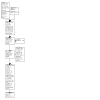

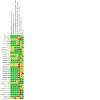

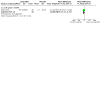
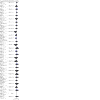
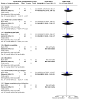
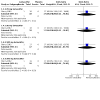




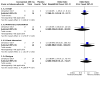

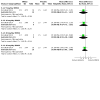
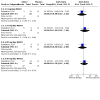
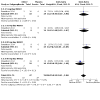
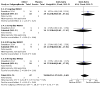



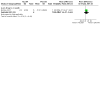
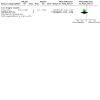

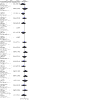

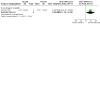
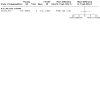


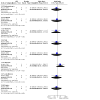




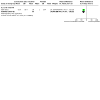
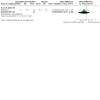
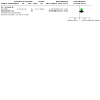

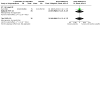
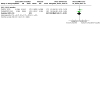
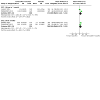
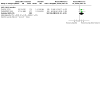
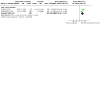
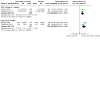



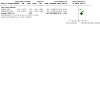
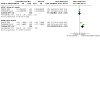
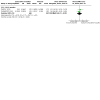


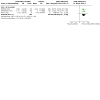


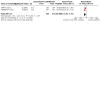

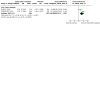

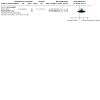


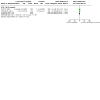
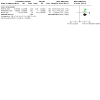


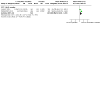
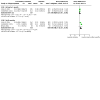
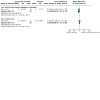
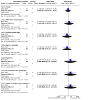




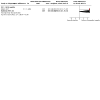


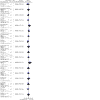

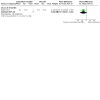
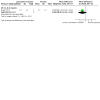
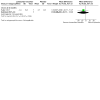

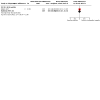
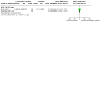

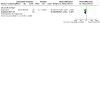
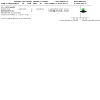

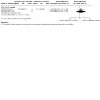
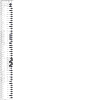




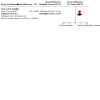

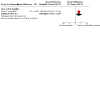
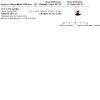
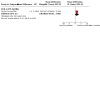
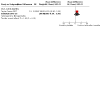



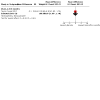
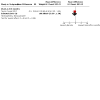





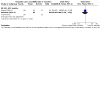


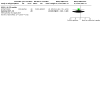

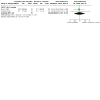
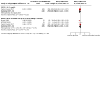
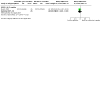
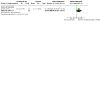

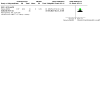
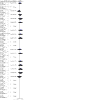

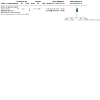
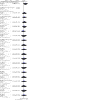
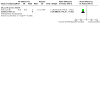

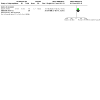
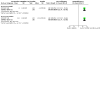
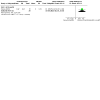


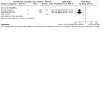


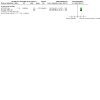



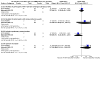


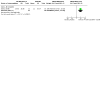
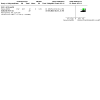

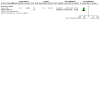

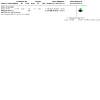



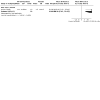
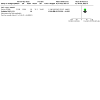
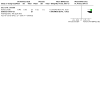
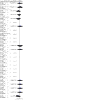

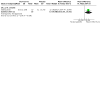




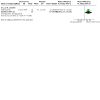

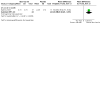
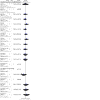


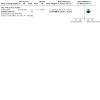
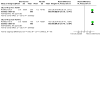
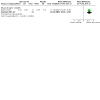


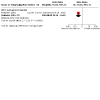
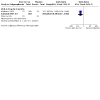



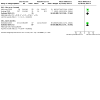

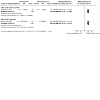
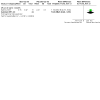


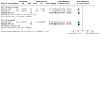

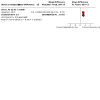

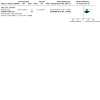

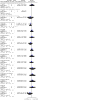


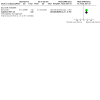
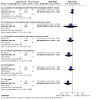
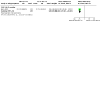


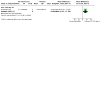
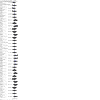

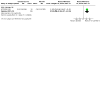
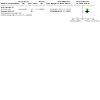
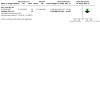

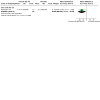
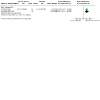
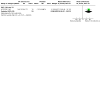

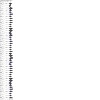

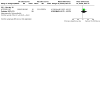






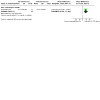
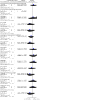
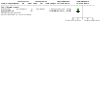
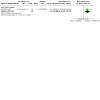

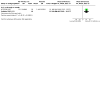

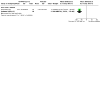
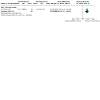
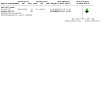



Update of
-
Corrector therapies (with or without potentiators) for people with cystic fibrosis with class II CFTR gene variants (most commonly F508del).Cochrane Database Syst Rev. 2020 Dec 17;12(12):CD010966. doi: 10.1002/14651858.CD010966.pub3. Cochrane Database Syst Rev. 2020. Update in: Cochrane Database Syst Rev. 2023 Nov 20;11:CD010966. doi: 10.1002/14651858.CD010966.pub4. PMID: 33331662 Free PMC article. Updated.
References
References to studies included in this review
Barry 2021 {published data only}
-
- 2018-002835-76. A phase 3, randomized, double-blind, controlled study evaluating the efficacy and safety of VX-445 combination therapy in subjects with cystic fibrosis who are heterozygous for the F508del mutation and a gating or residual function mutation (F/G and F/RF genotypes). https://www.clinicaltrialsregister.eu/ctr-search/trial/2018-002835-76/re... (this version publication date 22 July 2021).
-
- EUCTR2018-002835-76-IE. A phase 3 study of VX-445 combination therapy in cystic fibrosis (CF) subjects heterozygous for f508del and a gating or residual function mutation (F/G and F/RF genotypes). www.who.int/trialsearch/Trial2.aspx?TrialID=EUCTR2018-002835-76-IE (date started 29 October 2019). [CFGD REGISTER: BD293b]
-
- NCT04058353. A phase 3 study of VX-445 combination therapy in cystic fibrosis (CF) subjects heterozygous for F508del and a gating or residual function mutation (F/G and F/RF genotypes). clinicaltrials.gov/ct2/show/NCT04058353 (first received 15 August 2019). [CFGD REGISTER: BD293a] [EUDRACT NUMBER: 2018-002835-76]
Boyle 2014 {published data only}2010‐020413‐90
-
- Boyle M, Bell SC, Konstan M, McColley S, Flume P, Kang L, et al. Lumacaftor, an investigational CFTR corrector, in combination with ivacaftor, a CFTR potentiator, in CF patients with the F508del-CFTR mutation: phase 2 interim analysis. Journal of Cystic Fibrosis 2013;12 Suppl 1:S14. [ABSTRACT NO.: WS7.4] [CENTRAL: 921640] [CFGD REGISTER: BD169c]
-
- Boyle MP, Bell S, Konstan M, McColley SA, Kang L, Patel N, et al. The investigational CFTR corrector, VX-809 (lumacaftor) co-administered with the oral potentiator ivacaftor improved CFTR and lung function in F509-8DEL homozygous patients: phase II study results. Pediatric Pulmonology 2012;47 Suppl 35:315. [ABSTRACT NO.: 260] [CENTRAL: 921644] [CFGD REGISTER: BD169b]
-
- Boyle MP, Bell S, Konstan MW, McColley SA, Wisseh S, Spencer-Green G. VX-809, an investigational CFTR corrector, in combination with VX-770, an investigational CFTR potentiator, in subjects with CF and homozygous for the F508DEL-CFTR mutation. Pediatric Pulmonology 2011;46 Suppl 34:287. [ABSTRACT NO.: 212] [CENTRAL: 848840] [CFGD REGISTER: BD169a]
-
- Boyle MP, Bell SC, Konstan MW, McColley SA, Rowe SM, Rietschel E, et al. A CFTR corrector (lumacaftor) and a CFTR potentiator (ivacaftor) for treatment of patients with cystic fibrosis who have a phe508del CFTR mutation: a phase 2 randomised controlled trial. Lancet. Respiratory Medicine 2014;2(7):527-38. [CENTRAL: 994993] [CFGD REGISTER: BD169d] [EMBASE: 2014458184] - PubMed
-
- Boyle MP, Bell SC, Konstan MW, McColley SA, Rowe SM, Rietschel E, et al. Supplementary Appendix to "A CFTR corrector (lumacaftor) and a CFTR potentiator (ivacaftor) for treatment of patients with cystic fibrosis who have a phe508del CFTR mutation: A phase 2 randomised controlled trial.". Lancet. Respiratory Medicine 2014;2(7):527-38. [CENTRAL: 997711] [CFGD REGISTER: BD169e] - PubMed
Clancy 2012 {published data only}
-
- Clancy JP, Rowe SM, Accurso FJ, Aitken ML, Amin RS, Ashlock MA, et al. Results of a phase IIa study of VX-809, an investigational CFTR corrector compound, in subjects with cystic fibrosis homozygous for the F508del-CFTR mutation. Thorax 2012;67(1):12-8. [CENTRAL: 806692] [CFGD REGISTER: BD166c] - PMC - PubMed
-
- Clancy JP, Rowe SM, Accurso FJ, Ballmann M, Boyle MP, DeBoeck C, et al. A phase II, randomized, placebo-controlled, clinical trial of four doses of VX-809 in CF patients homozygous for the F508del CFTR mutation. Pediatric Pulmonology 2010;45 Suppl 33(S33):298. [ABSTRACT NO.: 224] [CENTRAL: 848845] [CFGD REGISTER: BD166b]
-
- Clancy JP, Rowe SM, Liu B, Hathorne H, Dong Q, Wisseh S, et al. Variability of nasal potential difference measurements in clinical testing of CFTR modulators. Pediatric Pulmonology 2011;46 Suppl 34(S34):283. [ABSTRACT NO.: 202] [CENTRAL: 848842] [CFGD REGISTER: BD166d // BD165n]
-
- Clancy JP, Spencer-Green G, for the VX-809-101SG. Clinical evaluation of VX-809, a novel investigational oral F508del-CFTR corrector, in subjects with cystic fibrosis homozygous for the F508del-CFTR mutation. Journal of Cystic Fibrosis 2010;9 Suppl 1:S20. [ABSTRACT NO.: 73] [CENTRAL: 848846] [CFGD REGISTER: BD166a]
-
- NCT00865904. Study of VX-809 in cystic fibrosis subjects with the ∆F508-CFTR gene mutation. www.clinicaltrials.gov/ct2/show/NCT00865904 (first received 19 March 2009).
Davies 2018a {published data only}
-
- A study to evaluate safety and pharmacokinetics of VX-659 in healthy subjects and in adults with cystic fibrosis. clinicaltrials.gov/ct2/show/NCT03029455 (first received 24 January 2017). [CFGD REGISTER: BD260a]
-
- Davies JC, Moskowitz SM, Brown C, Horsley A, Mall MA, McKone EF, et al. VX-659-tezacaftor-ivacaftor in patients with cystic fibrosis and one or two Phe508del alleles. New England Journal of Medicine 2018;379(17):1599-611. [CENTRAL: CN-01650323] [CFGD REGISTER: BD260b // BD248d] [EMBASE: 624591628] [PMID: ] - PMC - PubMed
Davies 2018b {published data only}
-
- A phase 2, randomized, double-blind, controlled study to evaluate the safety and efficacy of VX-659 combination therapy in subjects aged 18 years and older with cystic fibrosis. www.clinicaltrialsregister.eu/ctr-search/trial/2016-003585-11/ (start date 1 September 2017).
-
- Colombo C, Tullis E, Davies JC, McKee C, DeSouza C, Waltz D, et al. Preliminary safety and efficacy of triple combination CFTR modulator regimens in CF. Italian Journal of Pediatrics 2018;44(Suppl 1):6. [ABSTRACT NO.: 03] [CFGD REGISTER: BD248b]
-
- Davies JC, Colombo C, Tullis E, Mckee C, Desouza C, Waltz D, et al. Preliminary safety and efficacy of triple combination CFTR modulator regimens in cystic fibrosis. Journal of Cystic Fibrosis 2018;17(Suppl 3):S3. [CENTRAL: CN-01730786] [CFGD REGISTER: BD248a] [EMBASE: 622930757]
-
- Davies JC, Moskowitz SM, Brown C, Horsley A, Mall MA, McKone EF, et al. VX-659-tezacaftor-ivacaftor in patients with cystic fibrosis and one or two Phe508del alleles. New England Journal of Medicine 2018;379(17):1599-611. [CENTRAL: CN-01650323] [CFGD REGISTER: BD248d] [DOI: 10.1056/NEJMoa1807119] [EMBASE: 624591628] [PMID: ] - DOI - PMC - PubMed
-
- NCT03224351. A study evaluating the safety and efficacy of VX-659 combination therapy in subjects with cystic fibrosis. clinicaltrials.gov/show/NCT03224351 (first received 21 July 2017). [CFGD REGISTER: BD248e]
Davies 2021 {published data only}
-
- 2016-004479-35. A phase 3, double-blind, parallel-group study to evaluate the efficacy and safety of tezacaftor in combination with ivacaftor in subjects aged 6 through 11 years with cystic fibrosis, homozygous or heterozygous for the F508del-CFTR mutation. www.clinicaltrialsregister.eu/ctr-search/trial/2016-004479-35 (first received 17 May 2018). - PubMed
-
- Davies JC, Sermet-Gaudelus I, Naehrlich L, Harris RS, Campbell D, Ahluwalia N, et al. A phase 3, double-blind, parallel-group study to evaluate the efficacy and safety of tezacaftor in combination with ivacaftor in participants 6 through 11 years of age with cystic fibrosis homozygous for F508del or heterozygous for the F508del-CFTR mutation and a residual function mutation. Journal of Cystic Fibrosis 2021;20(1):68-77. [CFGD REGISTER: BD253b] - PubMed
-
- NCT03559062. A phase 3, double-blind, parallel-group study to evaluate the efficacy and safety of tezacaftor in combination with ivacaftor in subjects aged 6 through 11 years with cystic fibrosis, homozygous or heterozygous for the F508del-CFTR mutation. https://trialsearch.who.int/Trial2.aspx?TrialID=NCT03559062 (date of first enrolment 17 May 2018). - PubMed
-
- NCT03559062. A study to evaluate efficacy and safety of tez/iva in subjects aged 6 through 11 years with cystic fibrosis [A phase 3, double-blind, parallel-group study to evaluate the efficacy and safety of tezacaftor in combination with ivacaftor in subjects aged 6 through 11 years with cystic fibrosis, homozygous or heterozygous for the F508del-CFTR mutation]. clinicaltrials.gov/ct2/show/NCT03559062 (first received 15 June 2018). [CFGD REGISTER: BD253a]
Donaldson 2014 {published data only}
-
- Donaldson SH, Shoemaker S, Mandagere A, Troha J. Novel modifiers of CFTR: emerging clinical experience with GSNOR inhibitors. Pediatric Pulmonology 2014;49 Suppl 38:154. [ABSTRACT NO.: S10.2] [CENTRAL: 1015872] [CFGD REGISTER: BD217b]
-
- Donaldson SH, Taylor-Cousar JL, Rosenbluth D, Zeitlin P, Chmiel J, Jain M, et al. Safety, tolerability, and pharmacokinetics of the intravenous S-nitrosoglutathione reductase inhibitor N6022: an ascending-dose study in subjects homozygous for the F508DEL-CFTR mutation. Pediatric Pulmonology 2014;49 Suppl 38:308. [ABSTRACT NO.: 258] [CENTRAL: 1012386] [CFGD REGISTER: BD217a]
-
- NCT01746784. Safety and pharmacokinetic study of N6022 in subjects with cystic fibrosis homozygous for the F508del CFTR mutation (SNO1) [A phase 1b, randomized, double-blind, placebo-controlled, dose escalation study of N6022 to evaluate safety and pharmacokinetics in subjects with cystic fibrosis homozygous for the F508del-CFTR mutation (SNO1)]. clinicaltrials.gov/ct2/show/NCT01746784 (first received 11 December 2012). [CLINICALTRIALS.GOV: NCT01746784]
Donaldson 2017 {published data only}
-
- Donaldson SH, Solomon GM, Zeitlin PL, Flume PA, Casey A, McCoy K, et al. Pharmacokinetics and safety of cavosonstat (N91115) in healthy and cystic fibrosis adults homozygous for F508DEL-CFTR. Journal of Cystic Fibrosis 2017;16(3):371-9. [CFGD REGISTER: BD226b] - PubMed
-
- Donaldson SH, Solomon GM, Zeitlin PL, Flume PA, Casey A, McCoy K, et al. Pharmacokinetics and safety of cavosonstat (N91115) in healthy and cystic fibrosis adults homozygous for F508DEL-CFTR. Journal of Cystic Fibrosis 2017;16(3):371-9. Online supplementary tables and figures. [CFGD REGISTER: BD226c] - PubMed
-
- Donaldson SH. Safety and pharmacokinetics of N91115 in patients with cystic fibrosis homozygous for the F508DEL-CFTR mutation. Pediatric Pulmonology 2015;50 Suppl 41:293. [ABSTRACT NO.: 270] [CENTRAL: 1092200] [CFGD REGISTER: BD226a]
-
- NCT02275936. Study of N91115 in patients with cystic fibrosis homozygous F508del-CFTR mutation (SNO4) [A phase 1b, randomized, double-blind, placebo-controlled, parallel, group study of N91115 to evaluate safety and pharmacokinetics in patients with cystic fibrosis homozygous for the F508del-CFTR mutation]. clinicaltrials.gov/ct2/show/NCT02275936 (first received 27 October 2014).
Donaldson 2018 {published data only}
-
- Donaldson S, Pilewski J, Griese M, Dong Q, Lee PS, for theVX11-661-101SG. VX-661, an investigational CFTR corrector, in combination with ivacaftor, a CFTR potentiator, in patients with CF and homozygous for the F508Del-CFTR mutation: interim analysis. Journal of Cystic Fibrosis 2013;12 Suppl 1:S14. [ABSTRACT NO.: WS7.3] [CENTRAL: 872941] [CFGD REGISTER: BD190a]
-
- Donaldson SH, Pilewski JM, Cooke J, Himes-Lekstrom J, VX11-661-101 SG. Addition of VX-661, an investigational CFTR corrector, to ivacaftor, a CFTR potentiator, in patients with CF and heterozygous for F508DEL/G551D-CFTR. Pediatric Pulmonology 2014;49 Suppl 38:308-9. [ABSTRACT NO.: 260] [CENTRAL: 1012385] [CFGD REGISTER: BD190c]
-
- Donaldson SH, Pilewski JM, Griese M, Cooke J, Viswanathan L, Tullis E, et al. Tezacaftor/ivacaftor in subjects with cystic fibrosis and F508del/F508del-CFTR or F508del/G551D-CFTR. American Journal of Respiratory and Critical Care Medicine 2018;197(2):214-24. Online data supplement. [CFGD REGISTER: BD190f] - PMC - PubMed
-
- EUCTR2011-003821-93-DE. A phase 2, multicenter, double blinded, placebo controlled study to evaluate safety, efficacy, pharmacokinetics, and pharmacodynamics of VX-661 monotherapy and vx-661/ivacaftor cotherapy in subjects with cystic fibrosis, homozygous or heterozygous for the f508del CFTR mutation. www.who.int/trialsearch/Trial2.aspx?TrialID=EUCTR2011-003821-93-DE (first received 2011). [CENTRAL: CN-01882341] [CFGD REGISTER: BD190g]
Heijerman 2019 {published data only}
-
- Department of Error. Erratum: Department of Error (The Lancet (2019) 394(10212) (1940–1948), (S0140673619325978), (10.1016/S0140-6736(19)32597-8)). Lancet 2020;395(10238):1694. [CENTRAL: CN-02164017] [CFGD REGISTER: BD268c] [EMBASE: 2006013175] [PMID: ] - PubMed
-
- EUCTR2018-000184-89-BE. A phase 3 study of VX-445 combination therapy in CF subjects homozygous for f508del (F/F). www.who.int/trialsearch/Trial2.aspx?TrialID=EUCTR2018-000184-89-BE (date started 27 September 2018). [CFGD REGISTER: BD268g]
-
- Heijerman H, McKone E, Downey DG, Mall M, Ramsey B, Rowe S, et al. Phase 3 efficacy and safety of the ELX/TEZ/ iva triple combination in people with CF homozygous for the F508del mutation. Pediatric Pulmonology 2019;54 Suppl 2:347. [CENTRAL: CN-01990652] [CFGD REGISTER: BD268a] [EMBASE: 629389111]
-
- Heijerman HGM, McKone EF, Downey DG, Van Braeckel E, Rowe SM, Tullis E, et al. Efficacy and safety of the elexacaftor plus tezacaftor plus ivacaftor combination regimen in people with cystic fibrosis homozygous for the F508del mutation: a double-blind, randomised, phase 3 trial. Lancet 2019;394(10212):1940-8. [CENTRAL: CN-02006814] [CFGD REGISTER: BD268b] [DOI: 10.1016/S0140-6736(19)32597-8] [EMBASE: 2003873327] [PMID: ] - DOI - PMC - PubMed
-
- Majoor C, Van Brunt K, Daines C, Durieu I, Fajac I, Goralski J, et al. Impact of elexacaftor/tezacaftor/ivacaftor triple combination therapy on health-related quality of life in people with cystic fibrosis homozygous for F508DEL (F/F): results from a phase 3 clinical study. Thorax 2021;76(Suppl 1):A41-2. [CFGD REGISTER: BD268h]
Horsley 2017 {published and unpublished data}
-
- Horsley A, Burr L, Kotsimbos T, Ledson M, Schwarz C, Simmonds N, et al. Safety, pharmacokinetics and pharmacodynamics of the CFTR corrector FDL169. Journal of Cystic Fibrosis 2018;17(Suppl 3):S42. [CFGD REGISTER: BD250a]
-
- Horsley AR, Blaas S, Burr L, Caroll M, Downey DG, Drevinek P, et al. Novel CFTR corrector FDL169: safety, pharmacokinetics and pharmacodynamics. Journal of Cystic Fibrosis 2018;17 Suppl 3:S42. [CFGD REGISTER: BD250c]
-
- Horsley AR, Blaas S, Burr L, Carroll M, Downey DG, Drevinek P, et al. Novel CFTR corrector FDL169: safety, pharmacokinetics and pharmacodynamics. Pediatric Pulmonology 2018;53 (S2):252. [CFGD REGISTER: BD250b]
Keating 2018 {published data only}2017‐000797‐11
-
- Keating D, Marigowda G, Burr L, Daines C, Mall MA, McKone EF, et al. VX-445-tezacaftor-ivacaftor in patients with cystic fibrosis and one or two Phe508del alleles. New England Journal of Medicine 2018;379(17):1612-20. [CENTRAL: CN-01650324] [CFGD REGISTER: BD259] [EMBASE: 624591484] [PMID: ] - PMC - PubMed
-
- NCT03227471. A study of VX-445 in healthy subjects and subjects with cystic fibrosis [A phase 1/2 study of VX-445 in healthy subjects and subjects with cystic fibrosis]. clinicaltrials.gov/ct2/show/NCT03227471 (first posted 24 July 2017).
McCarty 2002 {published data only}
-
- Ahrens RC, Standaert TA, Launspach J, Han SH, Teresi ME, Aitken ML, et al. Use of nasal potential difference and sweat chloride as outcome measures in multicenter clinical trials in subjects with cystic fibrosis. Pediatric Pulmonology 2002;33(2):142-50. [CENTRAL: 385693] [CFGD REGISTER: BD136d] - PubMed
-
- Aitken ML, Ahrens RC, Karlin DA, Konstan MW, McNamara SC, Regelman WE, et al. Safety of a phase I double-blind placebo-controlled dose escalation trial of oral CPX in adult CF patients. Pediatric Pulmonology 1998;26 Suppl 17:276. [CENTRAL: 385694] [CFGD REGISTER: BD136b]
-
- McCarty NA, Standaert TA, Teresi M, Tuthill C, Launspach J, Kelley TJ, et al. A phase I randomized, multicenter trial of CPX in adult subjects with mild cystic fibrosis. Pediatric Pulmonology 2002;33(2):90-8. [CENTRAL: 377220] [CFGD REGISTER: BD136c] [PMID: ] - PubMed
-
- McCarty NA, Weatherly MR, Kelley TJ, Konstan MW, Milgram LJ, Teresi M, et al. Multicenter phase I trial of CPX in adults patients with mild CF: results of nasal potential difference measurements. Pediatric Pulmonology 1998;26 Suppl 17:276. [CENTRAL: 291449] [CFGD REGISTER: BD136a]
McKone 2021 {published data only}
-
- 2014-004838-25. A phase 3, randomized, double-blind, ivacaftor-controlled, parallel-group study to evaluate the efficacy and safety of VX-661 in combination with ivacaftor in subjects aged 12 years and older with cystic fibrosis, heterozygous for the F508del-CFTR mutation and a second CFTR allele with a gating defect that is clinically demonstrated to be ivacaftor responsive. https://www.clinicaltrialsregister.eu/ctr-search/trial/2014-004838-25/DE (first received 17 May 2016).
-
- McKone EF, DiMango EA, Sutharsan S, Barto TL, Campbell D, Ahluwalia N, et al. A phase 3, randomized, double-blind, parallel-group study to evaluate tezacaftor/ivacaftor in people with cystic fibrosis heterozygous for F508del-CFTR and a gating mutation. Journal of Cystic Fibrosis 2021;20(2):234-42. [CFGD REGISTER: BD288b] - PubMed
-
- NCT02412111. A phase 3 study of VX-661 in combination with ivacaftor in subjects aged 12 years and older with cystic fibrosis, who have one F508del-CFTR mutation and a second mutation that has been demonstrated to be clinically responsive to ivacaftor [A phase 3, randomized, double-blind, ivacaftor-controlled, parallel-group study to evaluate the efficacy and safety of VX-661 in combination with ivacaftor in subjects aged 12 years and older with cystic fibrosis, heterozygous for the F508del-CFTR mutation and a second CFTR allele with a gating defect that Is clinically demonstrated to be ivacaftor responsive]. clinicaltrials.gov/ct2/show/NCT02412111 (first received 8 April 2015). [CFGD REGISTER: BD288a]
-
- NCT02412111. A phase 3, randomized, double-blind, ivacaftor-controlled, parallel-group study to evaluate the efficacy and safety of VX-661 in combination with ivacaftor in subjects aged 12 years and older with cystic fibrosis, heterozygous for the F508del-CFTR mutation and a second CFTR allele with a gating defect that is clinically demonstrated to be ivacaftor responsive. https://trialsearch.who.int/Trial2.aspx?TrialID=NCT02412111 (date of first enrolment June 2015).
Middleton 2019 {published data only}
-
- EUCTR2018-000183-28-SE. A phase 3 study of VX-445 combination therapy in subjects with cystic fibrosis heterozygous for the f508del mutation and a minimal function mutation (F/MF). www.who.int/trialsearch/Trial2.aspx?TrialID=EUCTR2018-000183-28-SE (date started 27 August 2018). [CFGD REGISTER: BD267f]
-
- Fajac I, Van Brunt K, Daines C, Durieu I, Goralski J, Heijerman H, et al. Impact of elexacaftor/tezacaftor/ivacaftor triple combination therapy on health-related quality of life in people with cystic fibrosis heterozygous for F508DEL and a minimal function mutation (F/MF): results from a phase 3 clinical study. Thorax 2021;76(Suppl 1):A40-1. [CFGD REGISTER: BD267g]
-
- Fajac I, Van Brunt K, Daines C, Durieu I, Goralski J, Heijerman H, et al. Impact of elexacaftor/tezacaftor/ivacaftor triple combination therapy on health-related quality of life in people with cystic fibrosis heterozygous for F508del and a minimal function mutation: results from a Phase 3 clinical study. Journal of Cystic Fibrosis 2020;19:S118-9. [CENTRAL: CN-02140149] [CFGD REGISTER: BD267c] [EMBASE: 2006056615]
-
- Fajac I, Van Brunt K, Daines C, Durieu I, Goralski JL, Heijerman H, et al. Impact of elexacaftor/tezacaftor/ ivacaftor triple combination therapy on health-related quality of life in people with cystic fibrosis heterozygous for F508del and a minimal function mutation: results from a phase 3 clinical study. Pediatric Pulmonology 2020;55 Suppl 2:213. [CFGD REGISTER: BD267e]
-
- Jain R, Mall M, Drevinek P, Lands L, McKone E, Polineni D, et al. Phase 3 efficacy and safety of the ELX/TEZ/ iva triple combination in people with CF and F508del/minimal function genotypes. Pediatric Pulmonology 2019;54 Suppl:346-7. [CENTRAL: CN-01987255] [CFGD REGISTER: BD267a] [EMBASE: 629389084]
Munck 2020 {published data only}
-
- 2014-004787-37. A phase 3, randomized, double-blind, placebo-controlled, parallel-group study to evaluate the efficacy and safety of VX-661 in combination with ivacaftor in subjects aged 12 years and older with cystic fibrosis, heterozygous for the F508del-CFTR mutation and with a second CFTR mutation that is not likely to respond to VX-661 and/or ivacaftor therapy (F508del/NR). https://www.clinicaltrialsregister.eu/ctr-search/trial/2014-004787-37/re... (first version publication date 1 March 2017).
-
- Munck A, Kerem E, Ellemunter H, Campbell D, Wang LT, Ahluwalia N, et al. Tezacaftor/ivacaftor in people with cystic fibrosis heterozygous for minimal function CFTR mutations. Journal of Cystic Fibrosis 2020;19(6):962-8. [CENTRAL: CN-02142331] [CFGD REGISTER: BD274b] [DOI: 10.1016/j.jcf.2020.04.015] [EMBASE: 2006729203] [PMID: ] - DOI - PubMed
-
- NCT02516410. A study to evaluate the efficacy and safety of VX-661 in combination with ivacaftor in subjects aged 12 years and older with cystic fibrosis, heterozygous for the F508del-CFTR mutation. clinicaltrials.gov/ct2/show/NCT02516410 (first received 5 August 2015). [CFGD REGISTER: BD274a]
NCT02070744 {published data only}
-
- NCT02070744. Study to evaluate safety and efficacy of VX-661 in combination with ivacaftor in subjects with cystic fibrosis, homozygous for the F508del-CFTR mutation with an open-label expansion [A phase 2, randomized, multicenter, double blind, placebo controlled study to evaluate safety, efficacy, pharmacokinetics, and pharmacodynamics of VX-661 in combination with ivacaftor for 12 weeks in subjects with cystic fibrosis, homozygous for the F508del CFTR mutation with an open-label extension]. clinicaltrials.gov/ct2/show/NCT02070744 (first received 25 February 2014). [CLINICALTRIALS.GOV: NCT02070744]
NCT02508207 {published data only}
-
- NCT02508207. A phase 2 study to evaluate effects of VX-661/Ivacaftor on lung and extrapulmonary systems in subjects with cystic fibrosis, homozygous for the F508del-CFTR mutation. clinicaltrials.gov/ct2/show/NCT02508207 (first received 24 July 2015).
NCT02730208 {published data only}
-
- 2019-002189-11. A phase 2, randomized, placebo-controlled, double-blind study to evaluate the effect of VX-661 in combination with ivacaftor on chest imaging endpoints in subjects aged 12 years and older with cystic fibrosis, homozygous for the F508del-CFTR mutation. https://www.clinicaltrialsregister.eu/ctr-search/trial/2019-002189-11/re... (this version publication date 7 November 2019).
-
- NCT02730208. A study to evaluate the effect of VX-661 in combination with ivacaftor on chest imaging endpoints in subjects with cystic fibrosis, homozygous for the F508del CFTR mutation [A phase 2, randomized, placebo-controlled, double-blind study to evaluate the effect of VX-661 in combination with ivacaftor on chest imaging endpoints in subjects aged 12 years and older with cystic fibrosis, homozygous for the F508del CFTR mutation]. clinicaltrials.gov/ct2/show/NCT02730208 (first received 6 April 2016).
NCT02951182 {published data only}
-
- 2016-000454-36. A phase 2, randomized, double-blind, controlled study to evaluate the safety and efficacy of VX-440 combination therapy in subjects aged 12 years and older with cystic fibrosis. www.clinicaltrialsregister.eu/ctr-search/trial/2016-000454-36/results (first published 1 December 2018). [CFGD REGISTER: BD305c]
-
- EUCTR2016-000454-36-AT. A study evaluating the safety and efficacy of VX-440 combination therapy in subjects with cystic fibrosis. trialsearch.who.int/Trial2.aspx?TrialID=EUCTR2016-000454-36-AT (first received 7 October 2016). [CFGD REGISTER: BD305b]
-
- NCT02951182. A study evaluating the safety and efficacy of VX-440 combination therapy in subjects with cystic fibrosis. clinicaltrials.gov/ct2/show/NCT02951182 (first received 1 November 2016). [CFGD REGISTER: BD305a]
NCT02951195 {published data only}
-
- NCT02951195. A study evaluating the safety of VX-152 combination therapy in adults with cystic fibrosis [A phase 2, randomized, double blind, controlled study to evaluate the safety of VX-152 combination therapy in adults with cystic fibrosis]. clinicaltrials.gov/ct2/show/NCT02951195 (first received 1 November 2016). [CFGD REGISTER: BD297]
NCT03447249 {published data only}
-
- 2017-004132-11. A phase 3, randomized, double-blind, controlled study evaluating the efficacy and safety of VX-659 combination therapy in subjects with cystic fibrosis who are heterozygous for the F508del mutation and a minimal function mutation (F/MF). www.clinicaltrialsregister.eu/ctr-search/trial/2017-004132-11 (first received 1 October 2018).
-
- NCT03447249. A phase 3, randomized, double-blind, controlled study evaluating the efficacy and safety of VX-659 combination therapy in subjects with cystic fibrosis who are heterozygous for the F508del mutation and a minimal function mutation (F/MF). clinicaltrials.gov/ct2/show/NCT03447249 (first received 27 February 2018).
-
- NCT03447249. A phase 3, randomized, double-blind, controlled study evaluating the efficacy and safety of VX-659 combination therapy in subjects with cystic fibrosis who are heterozygous for the F508del mutation and a minimal function mutation (F/MF). https://trialsearch.who.int/Trial2.aspx?TrialID=NCT03447249 (date of first enrolment 7 March 2018).
NCT03460990 {published data only}
-
- EUCTR2017-004133-82-GB. A study evaluating safety and efficacy of VX-659 combination therapy in subjects with cystic fibrosis. www.who.int/trialsearch/Trial2.aspx?TrialID=EUCTR2017-004133-82-GB (date started 1 May 2018). [CFGD REGISTER: BD294b]
-
- EUCTR2017-004133-82-IE. A study evaluating safety and efficacy of VX-659 combination therapy in subjects with cystic fibrosis. www.who.int/trialsearch/Trial2.aspx?TrialID=EUCTR2017-004133-82-IE (date started 1 May 2018). [CFGD REGISTER: BD294c]
-
- NCT03460990. A study of VX-659 combination therapy in CF subjects homozygous for F508del (F/F). clinicaltrials.gov/ct2/show/NCT03460990 (first received 9 March 2018). [CFGD REGISTER: BD294a] [EUDRACT NUMBER: 2017-004133-82]
PROGRESS 2017 {published data only}
-
- Konstan M, McKone E, Moss R, Marigowda G, Cooke J, Lubarsky B, et al. Evidence of reduction in annual rate of FEV1 decline and sustained benefits with lumacaftor and ivacaftor (LUM/IVA) in patients (pts) with cf homozygous for F508DEL-CFTR. Pediatric Pulmonology 2016;51 Suppl 45:260. [ABSTRACT NO.: 180] [CFGD REGISTER: BD213p // BD214p]
-
- Konstan MW, McKone EF, Moss RB, Marigowda G, Tian S, Waltz D, et al. Assessment of safety and efficacy of long-term treatment with combination lumacaftor and ivacaftor therapy in patients with cystic fibrosis homozygous for the F508del-CFTR mutation (PROGRESS): a phase 3, extension study. Lancet. Respiratory Medicine 2017;5(2):107-18. [CFGD REGISTER: BD213q // BD214q] [PMID: ] - PubMed
-
- Konstan MW, McKone EF, Moss RB, Marigowda G, Tian S, Waltz D, et al. Assessment of safety and efficacy of long-term treatment with combination lumacaftor and ivacaftor therapy in patients with cystic fibrosis homozygous for the F508del-CFTR mutation (PROGRESS): a phase 3, extension study. Lancet. Respiratory Medicine 2017;5(2):107-18. Online supplementary appendix. [CFGD REGISTER: BD213r // BD214r] - PubMed
-
- NCT01931839. A phase 3 rollover study of lumacaftor in combination with ivacaftor in subjects 12 years and older with cystic fibrosis [A phase 3, rollover study to evaluate the safety and efficacy of long-term treatment with lumacaftor in combination with ivacaftor in subjects aged 12 Years and older with cystic fibrosis, homozygous or heterozygous for the F508del-CFTR mutation]. clinicaltrials.gov/ct2/show/NCT01931839 (first received 29 August 2013). [CLINICALTRIALS.GOV: NCT01931839]
Ratjen 2017 {published data only}
-
- Anonymous. Corrections [Corrections: efficacy and safety of lumacaftor and ivacaftor in patients aged 6-11 years with cystic fibrosis homozygous for F508del-CFTR: a randomised, placebo-controlled phase 3 trial (The Lancet Respiratory Medicine (2017) 5(7) (557-567)(S2213260017302151)(10.1016/S2213-2600(17)30215-1))]. Lancet Respiratory Medicine 2017 Aug;5(8):e28. [CENTRAL: CN-01473292] [CFGD REGISTER: BD233k] [EMBASE: 617478198] [PMID: ] - PubMed
-
- Brody A, Nagle SK, Owen C, Marigowda G, Waltz D, Goldin J, et al. Effect of lumacaftor/ivacaftor on total, bronchiectasis, and air trapping computed tomography scores in children homozygous for F508DEL-CFTR: exploratory imaging substudy. Pediatric Pulmonology 2017;52 Suppl 47:286. [CFGD REGISTER: BD233d]
-
- Brody AS, Nagle S, Hug C, Marigowda G, Waltz D, Goldin J, et al. Effect of lumacaftor/ivacaftor on total, bronchiectasis and air trapping computed tomography (CT) scores in children homozygous for F508del-CFTR: exploratory imaging substudy. Thorax 2017;72(Suppl 3):A57. [CFGD REGISTER: BD233e]
-
- Brody AS, Nagle S, Hug C, Marigowda G, Waltz D, Goldin J, et al. Effect of lumacaftor/ivacaftor on total, bronchiectasis, and air trapping computed tomography (CT) scores in children homozygous for F508del-CFTR: exploratory imaging substudy. Thorax 2017;72(Suppl 3):A57. [CENTRAL: CN-01643820] [CFGD REGISTER: BD233e] [EMBASE: 619739057]
-
- Milla C, Ratjen F, Marigowda G, Liu F, Waltz D, Rosenfeld M. Safety, tolerability, and pharmacodynamics of combination lumacaftor/ivacaftor therapy in patients aged 6-11 yrs with CF homozygous for the F508DEL-CFTR mutation. Pediatric Pulmonology 2016;51 Suppl:259. [CENTRAL: CN-01212610] [CFGD REGISTER: BD233j] [EMBASE: 612358598]
Rubenstein 1998 {published data only}
-
- Rubenstein RC, Zeitlin PL. A pilot clinical trial of oral sodium 4-phenylbutyrate (Buphenyl) in deltaF508-homozygous cystic fibrosis patients: partial restoration of nasal epithelial CFTR function. American Journal of Respiratory and Critical Care Medicine 1998;157(2):484-90. [CENTRAL: 201485] [CFGD REGISTER: BD146b] [EMBASE: 1998064104] [PMID: ] - PubMed
-
- Rubenstein RC, Zeitlin PL. A randomized, double blind, placebo-controlled trial of sodium 4-phenylbutyrate (Buphenyl) in deltaF508-homozygous cystic fibrosis patients: partial restoration of nasal epithelial CFTR function. Pediatric Pulmonology 1997;Suppl 14:272. [CENTRAL: 291563] [CFGD REGISTER: BD146a] - PubMed
Schwarz 2021 {published data only}
-
- 2017-000540-18. Phase 3b, randomized, double-blind, placebo-controlled, parallel group study to assess the safety, efficacy, and tolerability of tezacaftor/ivacaftor (TEZ/IVA) in an Orkambi-experienced population who are homozygous for the F508del-CFTR mutation. https://www.clinicaltrialsregister.eu/ctr-search/trial/2017-000540-18/re... (this version publication date 3 January 2020).
-
- EUCTR2017-000540-18-DE. Phase 3b, randomized, double-blind, placebo-controlled, parallel group study to assess the safety, efficacy, and tolerability of tezacaftor/ivacaftor (TEZ/IVA) in an Orkambi-experienced population who are homozygous for the F508del-CFTR mutation. trialsearch.who.int/Trial2.aspx?TrialID=EUCTR2017-000540-18-DE (first received 13 September 2017).
-
- NCT03150719. A study to evaluate safety, efficacy, and tolerability of TEZ/IVA in Orkambi® (lumacaftor/ivacaftor) - experienced subjects with cystic fibrosis (CF) [Phase 3b, randomized, double-blind, placebo-controlled, parallel group study to assess the safety, efficacy, and tolerability of tezacaftor/ivacaftor (TEZ/IVA) in an Orkambi-experienced population who are homozygous for the F508del CFTR mutation]. clinicaltrials.gov/ct2/show/NCT03150719 (first posted 12 May 2017). [CFGD REGISTER: BD273a]
-
- Schwarz C, Sutharsan S, Epaud R, Klingsberg R, Fischer R, Rowe SM, et al. Safety, efficacy, and tolerability of tezacaftor/ivacaftor in cystic fibrosis patients who previously discontinued lumacaftor/ivacaftor due to respiratory adverse events: a randomized, double-blind, placebo-controlled phase 3b study. Pneumologie 2019;73(Suppl 1):P13. [CENTRAL: CN-01960602] [CFGD REGISTER: BD273b] [DOI: 10.1055/s-0039-1678160] [EMBASE: 628475379] - DOI
-
- Schwarz C, Sutharsan S, Epaud R, Klingsberg RC, Fischer R, Rowe SM, et al. Tezacaftor/ivacaftor in people with cystic fibrosis who stopped lumacaftor/ivacaftor due to respiratory adverse events. Journal of Cystic Fibrosis 2021;20(2):228-33. [CENTRAL: CN-02143375] [CFGD REGISTER: BD273c] [DOI: 10.1016/j.jcf.2020.06.001] [EMBASE: 2006829285] [PMID: ] - DOI - PMC - PubMed
Stahl 2021 {published data only}
-
- EUCTR2017-003761-99-DE. A study of the effects of lumacaftor/ivacaftor on disease progression in subjects aged 2 through 5 years with cystic fibrosis, homozygous for f508del [An exploratory phase 2, 2-part, randomized, double blind, placebo controlled study with a long term, open label period to explore the impact of lumacaftor/ivacaftor on disease progression in subjects aged 2 through 5 years with cystic fibrosis, homozygous for f508del]. www.who.int/trialsearch/Trial2.aspx?TrialID=EUCTR2017-003761-99-DE (first received 2018). [CENTRAL: CN-01908852] [CFGD REGISTER: BD276b]
-
- NCT03625466. A study to explore the impact of lumacaftor/ivacaftor on disease progression in subjects aged 2 through 5 years with cystic fibrosis, homozygous for f508del [An exploratory phase 2, 2-part, randomized, double-blind, placebo-controlled study with a long-term, open-label period to explore the impact of lumacaftor/ivacaftor on disease progression in subjects aged 2 through 5 years with cystic fibrosis, homozygous for f508del]. clinicaltrials.gov/show/NCT03625466 (first received 10 August 2018). [CENTRAL: CN-01626171] [CFGD REGISTER: BD276a]
-
- Stahl M, Roehmel J, Eichinger M, Doellinger F, Naehrlich L, Kopp MV, et al. An exploratory study to determine the impact of lumacaftor/ivacaftor (LUM/IVA) on disease progression in children 2 through 5 years of age with cystic fibrosis homozygous for F508del-CFTR (F/F). Journal of Cystic Fibrosis 2021;20 Suppl 1:S22. [CFGD REGISTER: BD276d]
-
- Stahl M, Roehmel J, Eichinger M, Doellinger F, Naehrlich L, Kopp MV, et al. Long-term efficacy of lumacaftor/ivacaftor (LUM/IVA) in children aged 2 through 5 years with cystic fibrosis (CF) homozygous for the F508del-CFTR mutation (F/F): a phase 2, open-label extension study. Journal of Cystic Fibrosis 2022;21 Suppl 1:S32-3. [CFGD REGISTER: BD276c]
Sutharsan 2022 {published data only}
-
- EUCTR2019-001735-31-GB. A study to evaluate the safety and efficacy of VX-445 / tezacaftor / ivacaftor in patients suffering from cystic fibrosis. www.who.int/trialsearch/Trial2.aspx?TrialID=EUCTR2019-001735-31-GB (date started 13 September 2019). [CFGD REGISTER: BD292b]
-
- NCT04105972. A study evaluating the efficacy and safety of VX-445/tezacaftor/ivacaftor in cystic fibrosis subjects, homozygous for F508del. clinicaltrials.gov/ct2/show/NCT04105972 (first posted 26 September 2019). [CFGD REGISTER: BD292a]
-
- Sutharsan S, McKone EF, Downey DG, Duckers J, MacGregor G, Tullis E, et al. Efficacy and safety of elexacaftor plus tezacaftor plus ivacaftor versus tezacaftor plus ivacaftor in people with cystic fibrosis homozygous for F508del-CFTR: a 24-week, multicentre, randomised, double-blind, active-controlled, phase 3b trial. The Lancet. Respiratory Medicine 2022;10(3):267-77. [CFGD REGISTER: BD292c] [DOI: 10.1016/S2213-2600(21)00454-9] - DOI - PubMed
Taylor‐Cousar 2017 {published data only}
-
- Flume P, Lekstrom-Himes J, Fischer Biner R, Simard C, Downey DG, Zhou H, et al. A phase 3, open-label study of tezacaftor/ivacaftor (TEZ/IVA) therapy, interim analysis of pooled safety, and efficacy in patients homozygous for F508del-CFTR. Journal of Cystic Fibrosis 2018;17 Suppl 3:S64-5. [CFGD REGISTER: BD236d]
-
- Ingenito E, Nair N, Yi B, Lekstrom-Himes J, Elborn JS, Rowe SM. Retrospective analysis of physiological response patterns to tezacaftor/ivacaftor in patients with cystic fibrosis homozygous for F508DEL-CFTR or heterozygous for F508DEL-CFTR and a residual function mutation. Thorax 2018;73(Suppl 4):A42-3. [CENTRAL: CN-02002310] [CFGD REGISTER: BD236i // BD237h] [EMBASE: 627697348]
-
- NCT02347657. A randomized, double-blind, placebo-controlled, parallel-group study to evaluate the efficacy and safety of VX-661 in combination with ivacaftor. clinicaltrials.gov/show/NCT02347657 (first received 27 January 2015). [CFGD REGISTER: BD236k]
-
- Smith D, Flume P, Lekstrom-Himes J, Fischer Biner R, Simard C, Downey D, et al. Phase 3 interim analysis: tezacaftor/ivacaftor (TEZ/IVA) in patients homozygous for F508delcystic fibrosis transmembrane conductance regulator (CFTR). Respirology 2019;24(S1):30. [ABSTRACT NO.: TO017] [CENTRAL: CN-02002181] [CFGD REGISTER: BD236j] [EMBASE: 626940397]
-
- Sommerburg O, Yang Y, Rizio AA, Loop B, You X, Kosinski M, et al. Effects of tezacaftor/ivacaftor (TEZ/IVA) treatment in patients with cystic fibrosis and F508del/F508del-CFTR: patient-reported outcomes in a Phase 3, randomised, controlled trial (EVOLVE). Pneumologie 2019;73(Suppl 1):P13. [CENTRAL: CN-01960604] [CFGD REGISTER: BD236h] [DOI: 10.1055/s-0039-1678165] [EMBASE: 628475389] - DOI
TRAFFIC 2015 {published data only}
-
- De Boeck C. Long-term clinical effects of CFTR co-therapy with lumacaftor/ivacaftor. Pediatric Pulmonology 2015;50:135-7. [CENTRAL: 1163954] [CFGD REGISTER: BD213m/BD214m] [EMBASE: 72081237] [SYMPOSIUM SUMMARY: S9.1]
-
- De Boeck K, Elborn J, Ramsey B, Boyle MP, Konstan MW, Huang X, et al. Efficacy and safety of lumacaftor+ivacaftor combination therapy in patients with CF homozygous for F508DEL-CFTR by FEV1 subgroups. Pediatric Pulmonology 2015;50 Suppl 41:283. [ABSTRACT NO.: 245] [CENTRAL: 1092180] [CFGD REGISTER: BD213f/BD214f]
-
- Elborn J, Wainwright CE, Ramsey B, Huang X, Margowda G, Waltz D, et al. Effect of lumacaftor in combination with ivacaftor in patients with cystic fibrosis who are homozygous for F508-DEL-CFTR: the TRAFFIC Study. Pediatric Pulmonology 2014;49 Suppl 38:304. [ABSTRACT NO.: 249] [CENTRAL: 1012382] [CFGD REGISTER: BD213a]
-
- Elborn JS, Ramsey B, Boyle MP, Wainwright C, Konstan M, Huang X, et al. Lumacaftor in combination with ivacaftor in patients with cystic fibrosis who are homozygous for the F508del-CFTR mutation. Journal of Cystic Fibrosis 2015;14 Suppl 1:S1. [ABSTRACT NO.: WS01.3] [CENTRAL: 1077209] [CFGD REGISTER: BD213e/BD214d]
-
- Elborn JS, Ramsey BW, Boyle MP, Konstan MW, Huang X, Marigowda G, et al. Efficacy and safety of lumacaftor/ivacaftor combination therapy in patients with cystic fibrosis homozygous for Phe508del CFTR by pulmonary function subgroup: a pooled analysis. Lancet. Respiratory Medicine 2016;4(8):617-26. [CENTRAL: 1157425] [CFGD REGISTER: BD213i/BD214i] [DOI: 10.1016/S2213-2600(16)30121-7] [PMID: ] - DOI - PMC - PubMed
TRANSPORT 2015 {published data only}
-
- De Boeck C. Long-term clinical effects of CFTR co-therapy with lumacaftor/Ivacaftor. Pediatric Pulmonology 2015;50:135-7. [CENTRAL: 1163954] [CFGD REGISTER: BD214m/BD213m] [EMBASE: 72081237] [SYMPOSIUM SUMMARY: S9.1]
-
- De Boeck K, Elborn J, Ramsey B, Boyle MP, Konstan MW, Huang X, et al. Efficacy and safety of lumacaftor+ivacaftor combination therapy in patients with CF homozygous for F508DEL-CFTR by FEV1 subgroups. Pediatric Pulmonology 2015;50 Suppl 41:283. [ABSTRACT NO.: 245] [CENTRAL: 1092180] [CFGD REGISTER: BD214f/BD213f]
-
- Elborn JS, Ramsey B, Boyle MP, Wainwright C, Konstan M, Huang X, et al. Lumacaftor in combination with ivacaftor in patients with cystic fibrosis who are homozygous for the F508del-CFTR mutation. Journal of Cystic Fibrosis 2015;14 Suppl 1:S1. [ABSTRACT NO.: WS01.3] [CENTRAL: 1077209] [CFDG REGISTER: BD214d/BD213e]
-
- Elborn JS, Ramsey BW, Boyle MP, Konstan MW, Huang X, Marigowda G, et al. Efficacy and safety of lumacaftor/ivacaftor combination therapy in patients with cystic fibrosis homozygous for Phe508del CFTR by pulmonary function subgroup: a pooled analysis. Lancet. Respiratory Medicine 2016;4(8):617-26. [CENTRAL: 1157425] [CFGD REGISTER: BD214i/BD213i] [DOI: 10.1016/S2213-2600(16)30121-7] [PMID: ] - DOI - PMC - PubMed
-
- Elborn JS, Ramsey BW, Boyle MP, Konstan MW, Huang X, Marigowda G, et al. Efficacy and safety of lumacaftor/ivacaftor combination therapy in patients with cystic fibrosis homozygous for Phe508del CFTR by pulmonary function subgroup: a pooled analysis. Lancet. Respiratory Medicine 2016;4(8):617-26. Online supplementary appendix. [CFGD REGISTER: BD214o/BD213o] - PMC - PubMed
Wilson 2021 {published data only}
-
- 2016-000066-34. A phase 4, randomized, double-blind, placebo-controlled, parallel-design study of the effect of lumacaftor/ivacaftor combination therapy on exercise tolerance in subjects aged 12 years and older with cystic fibrosis, homozygous for the F508del-CFTR mutation. https://www.clinicaltrialsregister.eu/ctr-search/trial/2016-000066-34/re... (this version publication date 2 February 2019).
-
- EUCTR2016-000066-34-GB. A phase 4, randomized, double-blind, placebo-controlled, parallel-design study of the effect of lumacaftor/ivacaftor combination therapy on exercise tolerance in subjects aged 12 years and older with cystic fibrosis, homozygous for the F508del-CFTR mutation. https://trialsearch.who.int/Trial2.aspx?TrialID=EUCTR2016-000066-34-GB (first received 25 July 2017).
-
- NCT02875366. A study of the effects of lumacaftor/ivacaftor (LUM/IVA) on exercise tolerance in subjects with cystic fibrosis (CF), homozygous for the f508del-cftr mutation. clinicaltrials.gov/show/NCT02875366 (first received 23 August 2016). [CFGD REGISTER: BD287a]
-
- Wilson J, You X, Ellis M, Urquhart DS, Jha L, Duncan M, et al. VO2max as an exercise tolerance endpoint in people with cystic fibrosis: lessons from a lumacaftor/ivacaftor trial. Journal of Cystic Fibrosis 2021;20(3):499-505. [CFGD REGISTER: BD287b] - PubMed
Zeitlin 2002 {published data only}
-
- Zeitlin PL, Diener-West M, Rubenstein RC, Boyle MP, Lee CK, Brass-Ernst L. Evidence of CFTR function in cystic fibrosis after systemic administration of 4-phenylbutyrate. Molecular Therapy 2002;6(1):119-26. [CENTRAL: 409030] [CFGD REGISTER: BD148] [PMID: ] - PubMed
References to studies excluded from this review
Berkers 2014 {published data only}
-
- Berkers G, Vijftigschild L, Bronsveld I, Arets H, Winter-de Groot K, Heijerman H, et al. A beta-2 agonist as a CFTR activator in CF; the ABBA study. Pediatric Pulmonology 2014;49 Suppl 38:299-300. [ABSTRACT NO.: 236] [CENTRAL: 1012380] [CFGD REGISTER: BD212a]
-
- EUCTR2014-000057-37-NL. Bronchodilcation as a CFTR activator in CF. trialsearch.who.int/Trial2.aspx?TrialID=EUCTR2014-000057-37-NL (first registered 12 February 2014). [CFGD REGISTER: BD212b]
-
- NTR4513. A B2-agonist as a CFTR activator in CF. http://www.who.int/trialsearch/Trial2.aspx?TrialID=NTR4513 (registered 14 April 2014). [CFGD REGISTER: BD212c]
Berkers 2021 {published data only}
-
- Berkers G, Meer R, Heijerman H, Beekman JM, Boj SF, Vries RGJ, et a. Lumacaftor/ivacaftor in people with cystic fibrosis with an A455E-CFTR mutation. Journal of Cystic Fibrosis 2021;20(5):761-7. [CFGD REGISTER: BD286b] - PubMed
-
- NCT03061331. Lumacaftor/ivacaftor combination therapy in subjects with CF WHO have an A455E CFTR mutation. clinicaltrials.gov/show/NCT03061331 (date first posted 23 February 2017). [CFGD REGISTER: BD286a]
Chadwick 1998 {published data only}
-
- Chadwick S, Browning JE, Stern M, Cheng SH, Gruenert DC, Geddes DM, et al. Nasal application of glycerol in DF508 cystic fibrosis patients. Pediatric Pulmonology 1998;Suppl 17:278. [ABSTRACT NO.: 275] [CENTRAL: 208568] [CFGD REGISTER: BD147]
Chilvers 2021 {published data only}
-
- Chilvers M, Davies JC, Ratjen F, Milla C, Owen CA, Tian S, et al. Long-term safety and efficacy of lumacaftor/ivacaftor therapy in patients aged 6-11 years with cystic fibrosis homozygous for the F508del-CFTR mutation (F/F). Journal of Cystic Fibrosis 2019;18 Suppl 1:S23. [ABSTRACT NO.: WS12-4] [CENTRAL: CN-02011205] [CFGD REGISTER: BD232c] [EMBASE: 2001976603]
-
- Chilvers M, Owen C, Marigowda G, Tian S, Solomon M, Black P, et al. Safety and efficacy of lumacaftor/ ivacaftor in patients aged =6 years with cf homozygous for F508DEL-CFTR (phase 3 extension study). Pediatric Pulmonology 2017;52 Suppl 47:319. [CFGD REGISTER: BD232b]
-
- Chilvers M, Tian S, Marigowda G, Bsharat M, Hug C, Solomon M, et al. An open-label extension (EXT) study of lumacaftor/ivacaftor (LIM/IVA) therapy in patients (pts) aged 6-11 years (yrs) with cystic fibrosis (CF) homozygous for F508del-CFTR. Journal of Cystic Fibrosis 2017;16 Suppl 1:S77. [ABSTRACT NO: 52] [CENTRAL: 1383248] [CFGD REGISTER: BD232a] [CLINICALTRIALS.GOV: NCT01897233]
-
- Chilvers MA, Davies JC, Milla C, Tian S, Han Z, Cornell AG, et al. Long-term safety and efficacy of lumacaftor-ivacaftor therapy in children aged 6-11 years with cystic fibrosis homozygous for the F508del-CFTR mutation: a phase 3, open-label, extension study. Lancet Respiratory Medicine 2021;9(7):721-32. [CFGD REGISTER: BD232d] - PubMed
-
- NCT01897233. Study of lumacaftor in combination with ivacaftor in subjects 6 through 11 years of age with cystic fibrosis, homozygous for the F508del-CFTR mutation [A phase 3, open-label study to evaluate the pharmacokinetics, safety, and tolerability of lumacaftor in combination with ivacaftor in subjects 6 through 11 years of age with cystic fibrosis, homozygous for the F508del-CFTR mutation]. clinicaltrials.gov/ct2/show/NCT01897233 (first received 11 July 2013). [CLINICALTRIALS.GOV: NCT01897233]
Chmiel 2021 {published data only}
-
- Chmiel J, Elborn S, Constantine S, White B. A double-blind, placebo-controlled phase 2 study in adults with cystic fibrosis of anabasum, a selective cannabinoid receptor type 2 agonist. Pediatric Pulmonology 2017;52 Suppl 47:317. [CFGD REGISTER: IB118b]
-
- Chmiel J, Elborn S, Constantine S, White B. Recent advances in anti-inflammatory treatment. Pediatric Pulmonology 2017;52 Suppl 47:177-8. [CFGD REGISTER: IB118c]
-
- Chmiel JF, Flume P, Downey DG, Dozor AJ, Colombo C, Mazurek H, et al. Safety and efficacy of lenabasum in a phase 2 randomized, placebo-controlled trial in adults with cystic fibrosis. Journal of Cystic Fibrosis 2021;20(1):78-85. [CFGD REGISTER: IB118d] - PubMed
-
- NCT02465450. Safety, tolerability, pharmacokinetics, and efficacy of JBT-101 (lenabasum) in cystic fibrosis. clinicaltrials.gov/show/NCT02465450 (first received 8 June 2015). [CFGD REGISTER: IB118e]
-
- NCT02465450. Safety, tolerability, pharmacokinetics, and efficacy of JBT-101 (lenabasum) in cystic fibrosis. clinicaltrials.gov/show/NCT02465450 (first received 8 June 2015). [CFGD REGISTER: IB118a]
Drevinek 2017 {published data only (unpublished sought but not used)}
-
- Drevinek P, Pready N, Lamontagne N, Montgomery S, Henig N. QR-010 via inhalation is safe, well tolerated and achieves systemic concentrations in a single ascending dose study in subjects with cystic fibrosis homozygous for the F508del CFTR mutation. Journal of Cystic Fibrosis 2017;16 Suppl 1:S73-4. [CFGD REGISTER: BD244a]
-
- Elborn S, Bouisset F, Checcio T, Perquin J, Lamontagne N, Montgomery S, et al. A first-in-human, phase 1b, dose escalation study of QR-010, a novel antisense oligonucleotide administered in subjects with cystic fibrosis homozygous for the F508del CFTR mutation. Paediatric Pulmonology 2017;52 Suppl 47:289. [CFGD REGISTER: BD244b]
ISRCTN14081521 {published data only}
-
- ISRCTN14081521. Can people with cystic fibrosis safely stop taking some of their nebulised treatments if they are established on the new modulator therapy, Kaftrio? www.who.int/trialsearch/Trial2.aspx?TrialID=ISRCTN14081521 (date started February 2021). [CFGD REGISTER: BD289]
Krivec 2021 {published data only}
-
- Krivec U, Praprotnik M, Aldeco M, Lepej D, Kotnik Pirs A, Zver A, et al. Increased pulmonary interstitial fluid at CFTR modulator therapy start. Journal of Cystic Fibrosis 2021;20 Suppl 1:S55. [CFGD REGISTER: PI335]
Leonard 2012 {published data only}
-
- Leonard A, Dingemanse J, Lebecque P, Leal T. Oral miglustat in homozygous F508del CF patients. Journal of Cystic Fibrosis 2010;9 Suppl 1:S20. [ABSTRACT NO.: 75] [CENTRAL: 921950] [CFGD REGISTER: BD193a]
-
- Leonard A, Lebecque P, Dingemanse J, Leal T. A randomized placebo-controlled trial of miglustat in cystic fibrosis based on nasal potential difference. Journal of Cystic Fibrosis 2012;11:231-6. [CENTRAL: 840524] [CFGD REGISTER: BD193b] [PMID: ] - PubMed
Marsh 2022 {published data only}
-
- Lim G, Ng C, Yule A, Hoad C, Dellschaft NS, Stewart I, et al. An assessment of terminal ileum morphology using magnetic resonance imaging in people with cystic fibrosis. Journal of Cystic Fibrosis 2022;21 Suppl 1:S113. [CFGD REGISTER: BD312c]
-
- Marsh R, Hanson L, Ng C, Mitchell-Whyte M, Dellschaft N, Hoad C, et al. Effects of Symkevi (tezacaftor/ivacaftor) on the lung and gut microbiota in cystic fibrosis. Journal of Cystic Fibrosis 2022;21 Suppl 1:S97. [CFGD REGISTER: BD312d]
-
- NCT04006873. Gut imaging for function & transit in cystic fibrosis study 2. clinicaltrials.gov/show/NCT04006873 (first received 5 July 2019). [CFGD REGISTER: BD312a]
-
- Ng C, Dellschaft N, Hoad C, Marciani L, Mainz J, Hill T, et al. Effects of tezacaftor/ivacaftor on gut function and transit in cystic fibrosis: a randomized, double-blind, placebo-controlled, crossover trial. Journal of Cystic Fibrosis 2021;20(Suppl 2):S102. [CFGD REGISTER: BD312b]
Meijer 2016 {published data only}
-
- EUCTR2015-002911-13-FR. A Phase II, dose ranging, multicenter, double-blind, placebo controlled study to evaluate safety and efficacy of (R)-roscovitine in subjects with cystic fibrosis. www.who.int/trialsearch/Trial2.aspx?TrialID=EUCTR2015-002911-13-FR (date started 15 September 2015). [CFGD REGISTER: BD230e]
-
- Leven C, Schutz S, Audrezet M-P, Nowak E, Meijer L, Montier T. Non-linear pharmacokinetics of oral roscovitine (Seliciclib) in cystic fibrosis patients chronically infected with pseudomonas aeruginosa: a study on population pharmacokinetics with monte carlo simulations. Pharmaceutics 2020;12(11):1-16. [CFGD REGISTER: BD230f] - PMC - PubMed
-
- Meijer L, Hery-Arnaud G, Le Berre R, Nowak E, Le Roux L, Gueganton L, et al. ROSCO-CF, a safety and efficacy clinical trial of (r)-roscovitine in CF patients. Pediatric Pulmonology 2016;51 Suppl 45:269. [CFGD REGISTER: BD230b]
-
- Meijer L, Hery-Arnaud G, Le Berre R, Nowak E, Le Roux L, Gueganton L, et al. Rosco-CF, a safety and efficacy clinical trial of (R)-roscovitine in CF patients. Journal of Cystic Fibrosis 2016;15 Suppl 1:S42. [ABSTRACT NO.: ePS03.7] [CENTRAL: 1157464] [CFGD REGISTER: BD230a]
-
- Meijer L, Hery-Arnaud G, Le Berre R, Nowak E, Rault G, Mottier D. ROSCO-CF, a safety and efficacy clinical trial of (R)-roscovitine in cystic fibrosis patients. Journal of Cystic Fibrosis 2018;17 Suppl 3:S25. [CFGD REGISTER: BD230c]
NCT00945347 {published data only}
-
- NCT00945347. Does a nasal instillation of miglustat normalize the nasal potential difference in cystic fibrosis patients? [Does a nasal instillation of miglustat normalize the nasal potential difference in cystic fibrosis patients homozygous for the F508del mutation? A randomized, double blind placebo-controlled study]. clinicaltrials.gov/show/NCT00945347 (first posted 24 July 2009).
NCT01899105 {published data only}
-
- NCT01899105. A phase 1 study to investigate the food effect of lumacaftor in combination with ivacaftor [A phase 1, randomized, single-dose, open-label crossover study to investigate the effect of food on the relative bioavailability of 2 fixed-dose combinations of lumacaftor and ivacaftor tablet formulations in healthy adult subjects]. clinicaltrials.gov/show/NCT01899105 (first received 15 July 2013). [CLINICALTRIALS.GOV: NCT01899105]
NCT02323100 {published data only}
-
- NCT02323100. Glycerol phenylbutyrate corrector therapy for CF (cystic fibrosis) (GPBA) [A double blind, placebo controlled, dose escalation trial of glycerol phenylbutyrate corrector therapy for cystic fibrosis]. clinicaltrials.gov/ct2/show/NCT02323100 (first received 23 December 2014).
NCT03447262 {published data only}
-
- NCT03447262. A study evaluating the long term safety and efficacy of VX-659 combination therapy. clinicaltrials.gov/ct2/show/NCT03447262 (first received 27 February 2018).
NCT03525574 {published data only}
-
- NCT03525574. A study evaluating the long-term safety and efficacy of VX-445 combination therapy. clinicaltrials.gov/ct2/show/NCT03525574 (first received 15 May 2018).
NCT03537651 {published data only}
-
- NCT03537651. A study to evaluate the safety and efficacy of long-term treatment with TEZ/IVA in CF subjects with an F508del CFTR mutation. clinicaltrials.gov/ct2/show/NCT03537651 (first received 25 May 2018).
NCT03601637 {published data only}
-
- NCT03601637. Safety and pharmacokinetic study of lumacaftor/ivacaftor in subjects 1 to less than 2 years of age with cystic fibrosis, homozygous for F508del. clinicaltrials.gov/ct2/show/NCT03601637 (first received 26 July 2018).
NCT03633526 {published data only}
-
- NCT03633526. Evaluation of VX-659/TEZ/IVA in cystic fibrosis subjects 6 through 11 years of age. clinicaltrials.gov/ct2/show/NCT03633526 (first received 16 August 2018).
NCT03691779 {published data only}
-
- NCT03691779. Evaluation of VX 445/TEZ/IVA in cystic fibrosis subjects 6 through 11 years of age. clinicaltrials.gov/ct2/show/NCT03691779 (first received 2 October 2018).
NCT03756922 {published data only}
-
- NCT03756922. A DDI study of FDL169 and FDL176 in healthy subjects. www.clinicaltrials.gov/ct2/show/NCT03756922 (first received 28 November 2018).
NCT04043806 {published data only}
-
- NCT04043806. A study evaluating the long-term safety of VX-445 combination therapy. clinicaltrials.gov/ct2/show/NCT04043806 (first received 2 August 2019).
NCT04058210 {published data only}
-
- NCT04058210. VX-445/TEZ/IVA expanded access program for cystic fibrosis (CF) patients heterozygous for F508del mutation and a minimal function mutation (F/MF genotypes). clinicaltrials.gov/ct2/show/NCT04058210 (first received 15 August 2019).
NCT04058366 {published data only}
-
- NCT04058366. Study evaluating the long-term safety and efficacy of VX-445 combination therapy. clinicaltrials.gov/ct2/show/NCT04058366 (first received 15 August 2019).
NCT04183790 {published data only}
-
- NCT04183790. Evaluation of long-term safety and efficacy of VX-445 combination therapy in subjects with cystic fibrosis who are 6 years of age and older. clinicaltrials.gov/ct2/show/NCT04183790 (first received 3 December 2019).
NCT04235140 {published data only}
-
- NCT04235140. Long-term safety of lumacaftor/ivacaftor in subjects with cystic fibrosis who are homozygous for F508del and 12 to <24 months of age at treatment initiation. clinicaltrials.gov/ct2/show/NCT04235140 (first received 21 January 2020).
NCT04362761 {published data only}
-
- NCT04362761. A study evaluating the long-term safety of elexacaftor combination therapy. clinicaltrials.gov/ct2/show/NCT04362761 (first received 27 April 2020).
NCT04537793 {published data only}
-
- NCT04537793. Evaluation of ELX/TEZ/IVA in cystic fibrosis (CF) subjects 2 through 5 years. https://clinicaltrials.gov/study/NCT04537793 (first received 3 September 2020).
NCT04545515 {published data only}
-
- NCT04545515. A study evaluating the long-term safety and efficacy of elexacaftor/tezacaftor/ivacaftor in cystic fibrosis (CF) subjects 6 years and older and F/MF genotypes. clinicaltrials.gov/ct2/show/NCT04545515 (first received 11 September 2020).
NCT05535959 {published data only}
-
- NCT05535959. A study to evaluate the relative bioavailability of a fixed-dose combination tablet of vx-121/tezacaftor/deutivacaftor. clinicaltrials.gov/show/NCT05535959 (first received 10 September 2022). [CFGD REGISTER: BD314]
Nick 2014 {published data only}
-
- Nick JA, Rodman D, St Clair C, Jones MC, Li H, Higgins M, et al. Effect of ivacaftor in patients with cystic fibrosis, residual CFTR function, and FEV1 ≥40% of predicted, N-of-1 study. Pediatric Pulmonology 2014;49 Suppl 38:285. [ABSTRACT NO.: 196] [CENTRAL: 1012379] [CFGD REGISTER: BD211a]
-
- Nick JA, Rodman D, St Clair C, Jones MC, Li H, Higgins M. Utilization of an "n-of-1" study design to test the effect of ivacaftor in CF patients with residual CFTR function and FEV1 >40% of predicted. Pediatric Pulmonology 2014;49:188-9. [CENTRAL: 1008991] [CFGD REGISTER: BD211b] [EMBASE: 71616032]
Rowe 2017 {published data only}
-
- Chuang C, Rizio A, Loop B, Lekstrom-Himes J, You X, Kosinski M, et al. Effects of tezacaftor/ivacaftor treatment in patients heterozygous for f508del-cftr and a residual function mutation: patient reported outcomes in a phase 3 randomized, controlled trial. Paediatric Pulmonology 2018;53 Suppl 2:S264. [CFGD REGISTER: BD237e] [CTG: ] [DOI: 10.1002/ppul.24152] - DOI
-
- Chuang C-C, Rizio AA, Loop B, Lekstrom-Himes J, You X, Kosinski M, et al. Effects of tezacaftor/ivacaftor (TEZ/IVA) treatment in patients heterozygous for F508DEL-CFTR and a residual function mutation: patient-reported outcomes in a phase 3 randomized, controlled trial (expand). Thorax 2018;73:A41. [CENTRAL: CN-01934562] [CFGD REGISTER: BD237f] [EMBASE: 627697165]
-
- Fischer R, Rizio AA, Loop B, Lekstrom-Himes J, You X, Kosinski M, et al. Effects of tezacaftor/ivacaftor (TEZ/IVA) treatment in patients heterozygous for F508del-CFTR and a residual function mutation: patient-reported outcomes in a Phase 3, randomised, controlled trial (EXPAND). Pneumologie 2019;73(Suppl 1):P13. [CENTRAL: CN-01960601] [CFGD REGISTER: BD237g] [DOI: 10.1055/s-0039-1678161] [EMBASE: 628475378] - DOI
-
- Fischer R, Rowe SM, Davies JC, Nair N, Han L, Lekstrom-Himes J. Efficacy and safety of tezacaftor/ivacaftor in patients (Pts) aged >= 12 Years with CF heterozygous for F508del and a residual function mutation: a randomized, double-blind, placebo-controlled, crossover phase 3 study. Pneumologie 2018;72 Suppl 1:S35. [CFGD REGISTER: BD237d] [DOI: 10.1055/s-0037-1619210] [NCT: 02392234] - DOI
-
- Ingenito E, Nair N, Yi B, Lekstrom-Himes J, Elborn JS, Rowe SM. Retrospective analysis of physiological response patterns to tezacaftor/ivacaftor in patients with cystic fibrosis homozygous for F508DEL-CFTR or heterozygous for F508DEL-CFTR and a residual function mutation. Thorax 2018;73(Suppl 4):A42-3. [CFGD REGISTER: BD237h] [DOI: 10.1136/thorax-2018-212555.75] - DOI
Rubenstein 2006 {published data only}
-
- Rubenstein RC, Propert KJ, Reenstra WW, Skotleski ML. A pilot trial of the combination of phenylbutyrate and genistein. Pediatric Pulmonology 2006;41 Suppl 29:294. [ABSTRACT NO.: 248] [CENTRAL: 593141] [CFGD REGISTER: BD149]
Sumner 2014 {published data only}
-
- Sumner Jones SG, Alton EW, Boyd A, Chang SH, Davies JC, Davies LA, et al. Molecular analyses of vector delivery and gene expression in a multidose trial of non-viral gene therapy in patients with CF. Pediatric Pulmonology 2014;49 Suppl 38:302. [ABSTRACT NO.: 243] [CENTRAL: 1012381] [CFGD REGISTER: BD210b]
-
- Waller MD, Harman KM, Boyd A, Chang SH, Gill DR, Griesenbach U, et al. Measurement of CFTR function in cystic fibrosis patients in response to multidose CFTR gene therapy. Pediatric Pulmonology 2014;49 Suppl 38:249. [ABSTRACT NO.: 97] [CENTRAL: 1012378] [CFGD REGISTER: BD210a]
Ziady 2015 {published data only}
-
- Ziady AG, Lin S, Heltshe SL, Kelley T, Muhlebach MS, Accurso FJ, et al. Protein expression in CF primary airway epithelia following treatment with VX-809 reveals significant changes in pkc-mediated signalling, proton and iron transport, and lipid metabolism. Pediatric Pulmonology 2015;50 Suppl 41:300. [ABSTRACT NO.: 290] [CENTRAL: 1092203] [CFGD REGISTER: BD225]
References to studies awaiting assessment
ALBATROSS {published data only (unpublished sought but not used)}BD247
-
- Bell S, De Boeck K, Drevinek P, Plant B, Barry P, Elborn S, et al. GLPG2222 in subjects with cystic fibrosis and the F508del/Class III mutation on stable treatment with ivacaftor: results from a phase II study (ALBATROSS). Journal of Cystic Fibrosis 2018;17 Suppl 3:S2. [ABSTRACT NO.: WS01.4] [CFGD REGISTER: BD247a]
-
- Bell S, De Boeck K, Drevinek P, Plant B, Barry P, Elborn S, et al. Results from a phase II study- ALBATROSS - evaluation of GLPG2222 in subjects with CF and the F508del/class III mutation on stable treatment with ivacaftor. Pediatric Pulmonology 2018;53 Suppl 2:249. [ABSTRACT NO.: 269] [CFGD REGISTER: BD247b]
-
- Bell SC, Barry PJ, De Boeck K, Drevinek P, Elborn JS, Plant BJ, et al. CFTR activity is enhanced by the novel corrector GLPG2222, given with and without ivacaftor in two randomized trials. Journal of Cystic Fibrosis 2019;18(5):700-7. [CENTRAL: CN-01936893] [CFGD REGISTER: BD247c // BD254c] [DOI: 10.1016/j.jcf.2019.04.014] [EMBASE: 2001903987] [PMID: ] - DOI - PubMed
-
- NCT03045523. A study to evaluate GLPG2222 in ivacaftor-treated subjects with cystic fibrosis. clinicaltrials.gov/ct2/show/NCT03045523 (first received 7 February 2017). [STUDY NO.: GLPG2222-CL-201]
Downey 2019 {published data only}
-
- Downey D, Flume P, Jain M, Fajac I, Schwarz C, Pressler T, et al. Initial results evaluating combinations of the novel CFTR corrector PTI-801, potentiator PTI-808, and amplifier PTI-428 in cystic fibrosis subjects. Journal of Cystic Fibrosis 2019;18 Suppl 1:S10. [CENTRAL: CN-01990618] [CFGD REGISTER: BD269a] [EMBASE: 2001976571]
-
- Flume P, Downey DG, Jain M, Fajac I, Schwarz C, Pressler T, et al. Evaluation of novel CFTR modulator combinations of the corrector PTI-801, potentiator PTI-808, and amplifier PTI-428 in CF subjects. Pediatric Pulmonology 2019;54 Suppl 2:348. [CENTRAL: CN-01989480] [CFGD REGISTER: BD269c] [EMBASE: 629387551]
-
- Jain M, Pilewski J, Flume P, Taylor-Cousar J, Rowe S, Milla C, et al. Initial results evaluating the add-on effect of the novel CFTR corrector PTI-801 in cystic fibrosis subjects. Journal of Cystic Fibrosis 2019;18 Suppl 1:S10-1. [CENTRAL: CN-02007011] [CFGD REGISTER: BD269b] [EMBASE: 2001976532]
Downey 2020 {published data only}
-
- Downey DG, Fajac I, Flume P, O'Carroll M, Pressler T, Proesmans M, et al. Evaluation of combinations of the CFTR potentiator dirocaftor, corrector posenacaftor and amplifier nesolicaftor in CF subjects with two copies of the F508del mutation. Pediatric Pulmonology 2020;55 Suppl 2:204. [CFGD REGISTER: BD285b]
-
- Downey DG, Fajac I, Flume P, O'Carroll M, Pressler T, Proesmans M, et al. Evaluation of combinations of the CFTR potentiator dirocaftor, corrector posenacaftor and amplifier nesolicaftor in cystic fibrosis subjects with two copies of the F508del mutation. Journal of Cystic Fibrosis 2020;19 Suppl:S19. [CFGD REGISTER: BD285a]
FLAMINGO {published data only (unpublished sought but not used)}
-
- Bell SC, Barry PJ, De Boeck K, Drevinek P, Elborn JS, Plant BJ, et al. CFTR activity is enhanced by the novel corrector GLPG2222, given with and without ivacaftor in two randomized trials. Journal of Cystic Fibrosis 2019;18(5):700-7. [CFGD REGISTER: BD247c // BD254c] [DOI: 10.1016/j.jcf.2019.04.014] - DOI - PubMed
-
- NCT03119649. A study to evaluate multiple doses of GLPG2222 in adult subjects with cystic fibrosis. clinicaltrials.gov/ct2/show/NCT03119649 (first received 18 April 2017). [STUDY NO.: GLPG2222-CL-202]
-
- Ent KC, Minic P, Verhulst S, Van Brackel E, Flume P, Boas S, et al. GLPG2222 in subjects with cystic fibrosis homozygous for F508del: results from a phase II study (FLAMINGO). Journal of Cystic Fibrosis 2018;17 Suppl 3:S42. [ABSTRACT NO.: EPS3.05] [CFGD REGISTER: BD254a]
-
- Ent KC, Minic P, Verhulst S, Van Brackel E, Flume P, Boas S, et al. GLPG2222 in subjects with cystic fibrosis homozygous for F508del: results from a phase II study (FLAMINGO). Pediatric Pulmonology 2018;53 Suppl 2:250. [ABSTRACT NO.: 271] [CFGD REGISTER: BD254b]
Hunt 2017 {published data only}
-
- Hunt K, St Clair C, Curran-Everett D, Solomon GM, Saavedra MT, Nick JA, et al. CFTR effects of oral sildenafil in combination with lumacaftor/ivacaftor in adults with CF. Pediatric Pulmonology 2017;52(Suppl 47):322. [CFGD REGISTER: IB117]
NCT03768089 {published data only}
-
- EudraCT 2018-000126-55. A phase 1/2 study of VX-121 in healthy subjects and in subjects with cystic fibrosis. www.clinicaltrialsregister.eu/ctr-search/search?query=2018-000126-55 (first received 15 March 2018). [CFGD REGISTER: BD295b]
-
- NCT03768089. Study of VX-121 in healthy subjects and in subjects with cystic fibrosis. clinicaltrials.gov/ct2/show/NCT03768089 (first received 7 December 2018). [CFGD REGISTER: BD295a] [EUDRACT NUMBER: 2018-000126-55]
NCT03969888 {published data only}
-
- EudraCT 2019-000750-63. A phase 2 study of ABBV-3067 alone and in combination with ABBV-2222 in cystic fibrosis subjects who are homozygous for the F508del mutation. www.clinicaltrialsregister.eu/ctr-search/search?query=2019-000750-63 (first received 31 October 2019). [CFGD REGISTER: BD296b]
-
- NCT03969888. A phase 2 study of ABBV-3067 alone and in combination with ABBV-2222. clinicaltrials.gov/show/nct03969888 (first received 31 May 2019). [CFGD REGISTER: BD296a]
NCT04353817 {published data only}
-
- EUCTR2019-003554-86-GB. A study evaluating efficacy and safety of elexacaftor/tezacaftor/ivacaftor in subjects 6 through 11 years old with cystic fibrosis and F/MF genotypes. www.who.int/trialsearch/Trial2.aspx?TrialID=EUCTR2019-003554-86-GB (date started 14 August 2020). [CFGD REGISTER: BD291b]
-
- NCT04353817. A study evaluating efficacy and safety of elexacaftor/tezacaftor/ivacaftor in subjects 6 through 11 years of age with cystic fibrosis and F/MF genotypes. clinicaltrials.gov/ct2/show/NCT04353817 (first received 20 April 2020). [CFGD REGISTER: BD291a]
PELICAN {published data only}
-
- EUCTR2017-002181-42-DE. GLPG2737 on top of Orkambi in subjects with cystic fibrosis [A phase IIa, randomized, double-blind, placebo-controlled study to evaluate GLPG2737 in Orkambi-treated subjects with cystic fibrosis homozygous for the F508del mutation]. www.who.int/trialsearch/Trial2.aspx?TrialID=EUCTR2017-002181-42-DE (first received 2017). [CENTRAL: CN-01887243] [CFGD REGISTER: BD272b]
-
- NCT03474042. GLPG2737 on top of Orkambi in subjects with cystic fibrosis [A phase IIa, randomized, double-blind, placebo-controlled study to evaluate GLPG2737 in orkambi-treated subjects with cystic fibrosis homozygous for the f508del mutation]. clinicaltrials.gov/show/NCT03474042 (first received 22 March 2018). [CFGD REGISTER: BD272a]
-
- Koningsbruggen-Rietschel S, Conrath K, Fischer R, Sutharsan S, Kempa A, Gleiber W, et al. GLPG2737 in lumacaftor/ivacaftor-treated CF subjects homozygous for the F508del mutation: a randomized phase 2A trial (PELICAN). Journal of Cystic Fibrosis 2020;19(2):292-8. [CENTRAL: CN-01999311] [CFGD REGISTER: BD272c] [EMBASE: 2003281625] [PMID: ] - PubMed
Rio‐CF {published data only (unpublished sought but not used)}
-
- Derichs N, Taylor-Cousar J, Tullis E, Davies J, Nazareth D, Downey DG, et al. Safety, tolerability and early signs of efficacy with riociguat for the treatment of adult phe508del homozygous cystic fibrosis patients: study design and rationale for the Rio-CF study. Journal of Cystic Fibrosis 2017;16 Suppl 1:S36. [CFGD REGISTER: BD246b]
-
- NCT02170025. Early signs of efficacy study with riociguat in adult homozygous delta F508 cystic fibrosis patients [Multi-center phase 2 study to assess the safety, tolerability and early signs of efficacy of tid orally administered BAY63-2521 in adult delta F508 homozygous cystic fibrosis patients]. clinicaltrials.gov/ct2/show/results/NCT02170025 (first received 23 June 2014).
-
- Taylor-Cousar JL, Tullis E, Derichs N, Davies JC, Nazareth D, Downey R, et al. Riociguat for the treatment of adult phe508del homozygous cystic fibrosis: efficacy data from the phase II Rio-CF study. Journal of Cystic Fibrosis 2018;17 Suppl 3:S67. [CFGD REGISTER: BD246a] - PubMed
Taylor‐Cousar 2019 {published data only}
-
- Taylor-Cousar J, Gifford AH, Flume P, Sawicki GS, Pilewski JM, Jain M, et al. Initial results evaluating the first-in-class CFTR amplifier, PTI-428, in subjects with CF on background treatment with tezacaftor/ ivacaftor. Pediatric Pulmonology 2019;54 Suppl 2:332. [CENTRAL: CN-01988388] [CFGD REGISTER: BD270] [EMBASE: 629388001]
Uluer 2023a {published data only}
-
- NCT03911713. A phase 2 study to evaluate efficacy and safety of VX-561 in subjects aged 18 years and older with cystic fibrosis. clinicaltrials.gov/ct2/show/NCT03911713 (first received 11 April 2019). [EUDRACT NUMBER: 2018-003970-28]
-
- Uluer AZ, MacGregor G, Azevedo P, Indihar V, Keating C, Mall MA, et al. Safety and efficacy of vanzacaftor-tezacaftor-deutivacaftor in adults with cystic fibrosis: randomised, double-blind, controlled, phase 2 trials. Lancet Respiratory Medicine 2023 Feb 23 [Epub ahead of print]. [DOI: 10.1016/S2213-2600(22)00504-5] - DOI - PubMed
Uluer 2023b {published data only}
-
- EUCTR2018-002496-18-PT. A study to evaluate the safety and efficacy of VX-121 combination therapy in subjects with cystic fibrosis [A phase 2, randomized, double-blind, controlled study to evaluate the safety and efficacy of VX-121 combination therapy in subjects aged 18 years and older with cystic fibrosis]. www.who.int/trialsearch/Trial2.aspx?TrialID=EUCTR2018-002496-18-PT (first received 2019). [CENTRAL: CN-02068097] [CFGD REGISTER: BD277b]
-
- NCT03912233. A study to evaluate the safety and efficacy of VX-121 combination therapy in subjects with cystic fibrosis [A phase 2, randomized, double-blind, controlled study to evaluate the safety and efficacy of VX-121 combination therapy in subjects aged 18 years and older with cystic fibrosis]. clinicaltrials.gov/show/NCT03912233 (first received 11 April 2019). [CENTRAL: CN-01912167] [CFGD REGISTER: BD277a]
-
- Uluer AZ, MacGregor G, Azevedo P, Indihar V, Keating C, Mall MA, et al. Safety and efficacy of vanzacaftor-tezacaftor-deutivacaftor in adults with cystic fibrosis: randomised, double-blind, controlled, phase 2 trials. Lancet Respiratory Medicine 2023 Feb 23 [Epub ahead of print]. - PubMed
Wainwright 2019 {published data only}
-
- Wainwright C, Stick S, Goldin J, Lekstrom-Himes J, Wang L, Campbell D, et al. Change in low-dose chest computed tomography (CT) scores after 72 weeks of tezacaftor/ivacaftor (TEZ/IVA) in patients (pts) with cystic fibrosis and ppFEV1 >=70%: an exploratory phase 2 study. Journal of Cystic Fibrosis 2019;18 Suppl 1:S11-2. [CENTRAL: CN-02009338] [CFGD REGISTER: BD275] [EMBASE: 2001976227]
References to ongoing studies
Jain 2018 {published data only (unpublished sought but not used)}
-
- Jain M, Flume P, Escobar H, Taylor-Cousar JL, Pressler T, Liou TG, et al. Initial results evaluating third generation CFTR corrector PTI-801 in CF subjects. Paediatric Pulmonology 2018;53 Suppl 2:246. [CFGD REGISTER: BD257]
NCT02589236 {published data only}
-
- NCT02589236. Study of cavosonstat (N91115) in patients with CF homozygous for the F508del-CFTR mutation (SNO-6) [A phase 2, randomized, double-blind, placebo-controlled, parallel-group study of N91115 to evaluate efficacy and safety in patients with cystic fibrosis who are homozygous for the F508del-CFTR mutation treated with lumacaftor/ivacaftor]. clinicaltrials.gov/ct2/show/NCT02589236 (first received 28 October 2015).
NCT02718495 {published data only}
-
- NCT02718495. Study assessing PTI-428 safety, tolerability, and pharmacokinetics in subjects with cystic fibrosis [A phase I/II, multi-center, randomized, placebo-controlled, study designed to assess the safety, tolerability, and pharmacokinetics of PTI-428 in subjects with cystic fibrosis]. clinicaltrials.gov/ct2/show/NCT02718495 (first received 24 March 2016).
NCT03258424 {published data only}
-
- NCT03258424. Study assessing PTI-428 safety, tolerability, and pharmacokinetics in subjects with cystic fibrosis on KALYDECO® as background therapy [A phase I, randomized, placebo-controlled, study designed to assess the safety, tolerability, and pharmacokinetics of PTI-428 in subjects with cystic fibrosis]. clinicaltrials.gov/ct2/show/NCT03258424 (first received 23 August 2017).
NCT04853368 {published data only}
-
- EUCTR2020-005805-25-HU. A study of galicaftor/navocaftor/abbv-119 combination therapy in subjects with cystic fibrosis. trialsearch.who.int/Trial2.aspx?TrialID=NCT04853368 (first received 19 April 2021). [CFGD REGISTER: BD313b]
-
- NCT04853368. Study to evaluate adverse events and change in disease activity with oral capsules of galicaftor/navocaftor/abbv-119 or galicaftor/navocaftor/abbv-576 combination therapies in adult participants with cystic fibrosis. clinicaltrials.gov/show/NCT04853368 (first received 21 April 2021). [CFGD REGISTER: BD313a]
NCT05033080 {published data only}
-
- EUCTR2021-000712-31-DE. A phase 3 study of VX-121 combination therapy in subjects with cystic fibrosis heterozygous for f508del and a minimal function mutation (F/MF). trialsearch.who.int/Trial2.aspx?TrialID=NCT05033080 (first received 26 August 2021). [CFGD REGISTER: BD290b]
-
- NCT05033080. A phase 3 study of VX-121 combination therapy in participants with cystic fibrosis (CF) heterozygous for F508del and a minimal function mutation (F/MF). www.clinicaltrials.gov/ct2/show/NCT05033080 (first received 2 September 2021). [CFGD REGISTER: BD290a]
NCT05076149 {published data only}
-
- EUCTR2021-000694-85-DK. A phase 3 study of VX-121 combination therapy in subjects with cystic fibrosis who are homozygous for f508del, heterozygous for f508del and a gating (F/G) or residual function (F/RF) mutation, or have at least 1 other triple combination responsive CFTR mutation and no f508del mutation. trialsearch.who.int/Trial2.aspx?TrialID=NCT05076149 (first received 29 September 2021). [CFGD REGISTER: BD311b]
-
- NCT05076149. A study of VX-121 combination therapy in participants with cystic fibrosis (CF) who are homozygous for F508del, heterozygous for F508del and a gating (F/G) or residual function (F/RF) mutation, or have at least 1 other triple combination responsive (TCR) CFTR mutation and no F508del mutation. www.clinicaltrials.gov/ct2/show/NCT05076149 (first received 13 October 2021). [CFGD REGISTER: BD311a]
NCT05274269 {published data only}
-
- EUCTR2021-005320-38-AT. Evaluation of efficacy and safety of ELX/TEZ/IVA in subjects without an f508del mutation. trialsearch.who.int/Trial2.aspx?TrialID=EUCTR2021-005320-38-AT (first received 5 January 2022). [CFGD REGISTER: BD306b]
-
- NCT05274269. Evaluation of efficacy and safety of elexacaftor/tezacaftor/ivacaftor (ELX/TEZ/IVA) in cystic fibrosis subjects without an f508del mutation. clinicaltrials.gov/show/NCT05274269 (first received 10 March 2022). [CFGD REGISTER: BD306a]
Additional references
Amaral 2007
-
- Amaral MD, Kunzelmann K. Molecular targeting of CFTR as a therapeutic approach to cystic fibrosis. Trends in Pharmacological Sciences 2007;28(7):334-41. - PubMed
Aslam 2023
Bobadilla 2002
-
- Bobadilla JL, Macek M, Fine JP, Farrell PM. Cystic fibrosis: a worldwide analysis of CFTR mutations - correlation with incidence data and application to screening. Human Mutation 2002;19(6):575-606. - PubMed
CFMD 2013
-
- Cystic Fibrosis Centre at the Hospital for Sick Children in Toronto, Canada. Cystic fibrosis mutation database. www.genet.sickkids.on.ca/app (accessed 23 September 2013).
Colledge 1995
-
- Colledge WH, Abella BS, Southern KW, Ratcliff R, Jiang C, Cheng SH, et al. Generation and characterization of a delta F508 cystic fibrosis mouse model. Nature Genetics 1995;10(4):445-52. - PubMed
Deeks 2022
-
- Deeks JJ, Higgins JP, Altman DG. Chapter 10: Analysing data and undertaking meta-analyses. In: Higgins JP, Thomas J, Chandler J, Cumpston M, Li T, Page MJ, Welch VA, editor(s). Cochrane Handbook for Systematic Reviews of Interventions Version 6.3 (updated February 2022). Cochrane, 2022. Available from training.cochrane.org/handbook.
EMA 2012
-
- European Medicines Agency. Report of the workshop on endpoints for cystic fibrosis clinical trials (EMA/769571/2012); November 2012. Available at www.ema.europa.eu/docs/en_GB/document_library/Report/2012/12/WC500136159....
Higgins 2003
Higgins 2017
-
- Higgins JP, Altman DG, Sterne JA. Chapter 8: Assessing risk of bias in included studies. In: Higgins JP, Churchill R, Chandler J, Cumpston MS, editor(s), Cochrane Handbook for Systematic Reviews of Interventions Version 5.2.0 (updated June 2017). The Cochrane Collaboration, 2017. Available from training.cochrane.org/handbook/archive/v5.2.
Higgins 2022
-
- Higgins JP, Eldridge S, Li T, editor(s). Chapter 23: Including variants on randomized trials. In: Higgins JP, Thomas J, Chandler J, Cumpston M, Li T, Page MJ, Welch VA, editor(s). Cochrane Handbook for Systematic Reviews of Interventions version 6.3 (updated February 2022). Cochrane, 2022. Available from training.cochrane.org/handbook.
NICE 2016
-
- Lumacaftor–ivacaftor for treating cystic fibrosis homozygous for the F508del mutation. www.nice.org.uk/guidance/ta398 (accessed 1 September 2020).
Parmar 1998
-
- Parmar MK, Torri V, Stewart L. Extracting summary statistics to perform meta-analyses of the published literature for survival endpoints. Statistics in Medicine 1998;17:2815-34. - PubMed
Quittner 2009
-
- Quittner AL, Modi AC, Wainwright C, Otto K, Kirihara J, Montgomery AB. Determination of the minimal clinically important difference scores for the Cystic Fibrosis Questionnaire-Revised respiratory symptom scale in two populations of patients with cystic fibrosis and chronic Pseudomonas aeruginosa airway infection. Chest 2009;135(6):1610-8. - PMC - PubMed
Ramsey 2011
Riordan 1989
-
- Riordan JR, Rommens JM, Kerem BS, Alon N, Rozmahel R, Grzelczak Z, et al. Identification of the cystic fibrosis gene – cloning and characterization of complementary. Science 1989;245(4922):1066-72. - PubMed
Rogan 2011
Rowntree 2003
-
- Rowntree RK, Harris A. The phenotypic consequences of CFTR mutations. Annals of Human Genetics 2003;67(5):471-85. - PubMed
Rubenstein 1997
Skilton 2019
Southern 1997
Southern 2007
-
- Southern KW. Cystic fibrosis and formes frustes of CFTR-related disease. Respiration: International Review of Thoracic Diseases 2007;74(3):241-51. - PubMed
Van Goor 2011
-
- Van Goor F, Hadida S, Grootenhuis PD, Burton B, Stack JH, Straley KS, et al. Correction of the F508del-CFTR protein processing defect in vitro by the investigational drug VX-809. Proceedings of the National Academy of Sciences of the United States of America 2011;108(46):18843-8. [DOI: 10.1073/pnas.1105787108] - DOI - PMC - PubMed
Wang 2022
-
- Wang Y, Ma B, Li W, Li P. Efficacy and safety of triple combination cystic fibrosis transmembrane conductance regulator modulators in patients with cystic fibrosis: a meta-analysis of randomized controlled trials. Frontiers in Pharmacology 2022;13:863280. [DOI: 10.3389/fphar.2022.863280] [PMID: ] - DOI - PMC - PubMed
Williamson 2002
-
- Williamson PR, Tudur Smith C, Hutton JL, Marson AG. Aggregate data meta-analysis with time-to-event outcomes. Statistics in Medicine 2002;21(11):3337-51. - PubMed
Wu 2018
-
- Wu HX, Zhu M, Xiong XF, Wei J, Zhuo KQ, Cheng DY. Efficacy and safety of CFTR corrector and potentiator combination therapy in patients with cystic fibrosis for the F508del-CFTR homozygous mutation: a systematic review and meta-analysis. Advances in Therapy 2018;36(2):451-61. [DOI: 10.1007/s12325-018-0860-4] [PMID: ] - DOI - PubMed
References to other published versions of this review
Southern 2018
Southern 2020
-
- Southern KW, Murphy J, Sinha IP, Nevitt SJ. Corrector therapies (with or without potentiators) for people with cystic fibrosis with class II CFTR gene variants (most commonly F508del). Cochrane Database of Systematic Reviews 2020, Issue 12. Art. No: CD010966. [DOI: 10.1002/14651858.CD010966.pub3] - DOI - PMC - PubMed
Publication types
MeSH terms
Substances
Associated data
LinkOut - more resources
Full Text Sources
Medical

